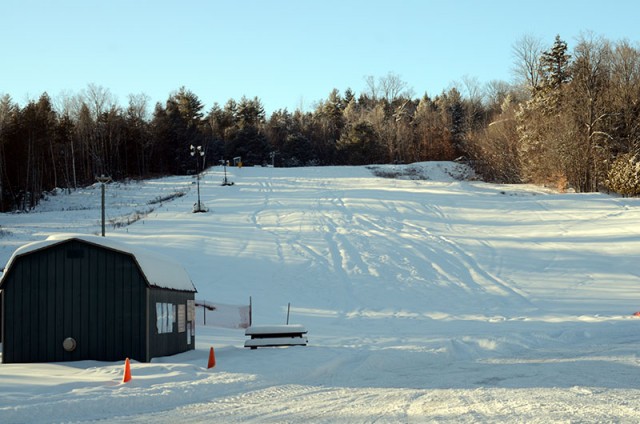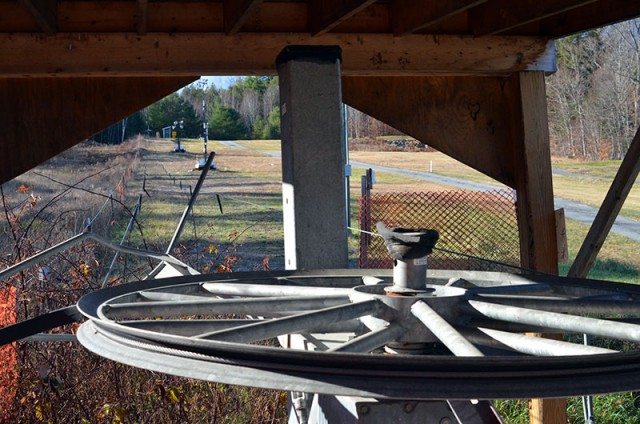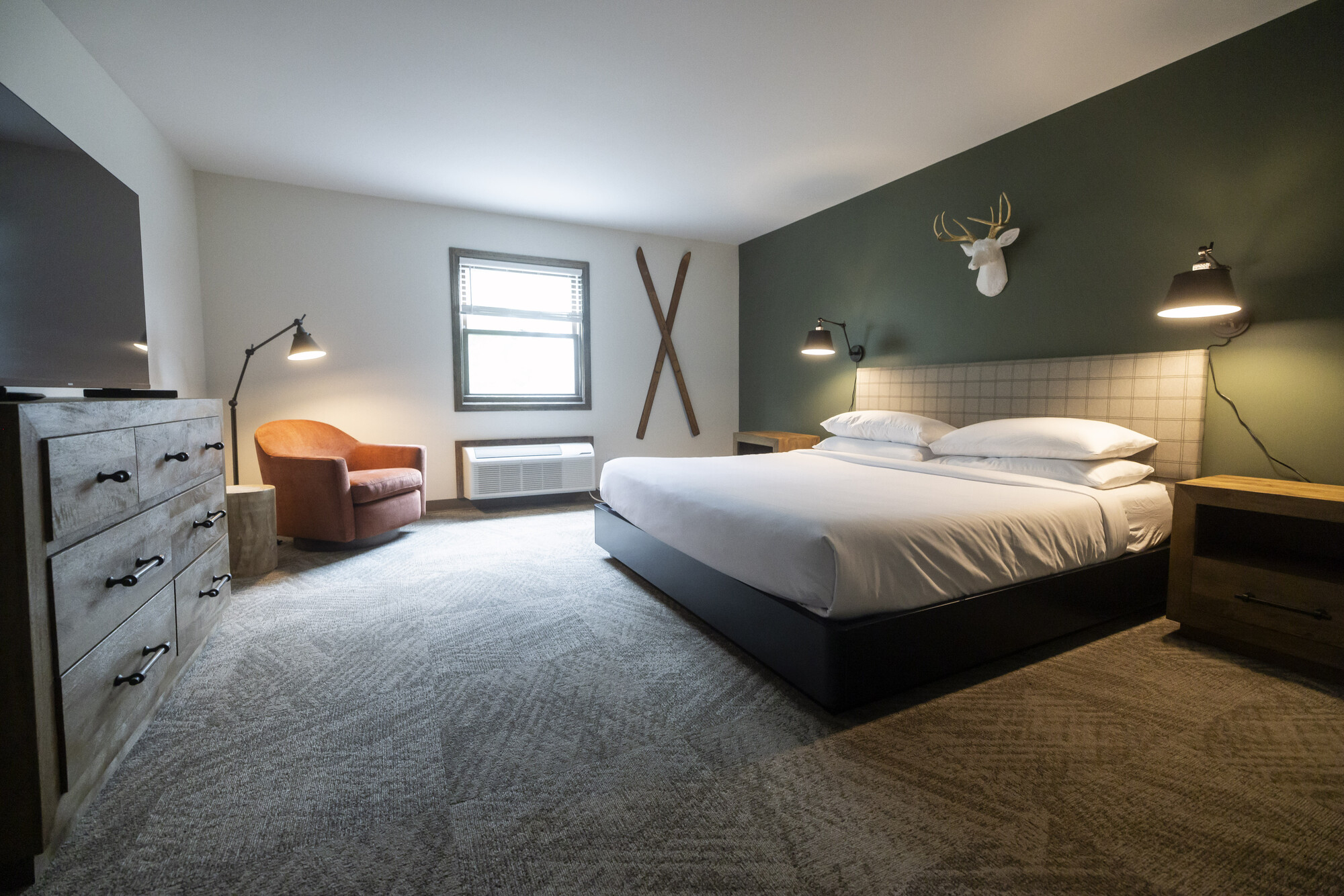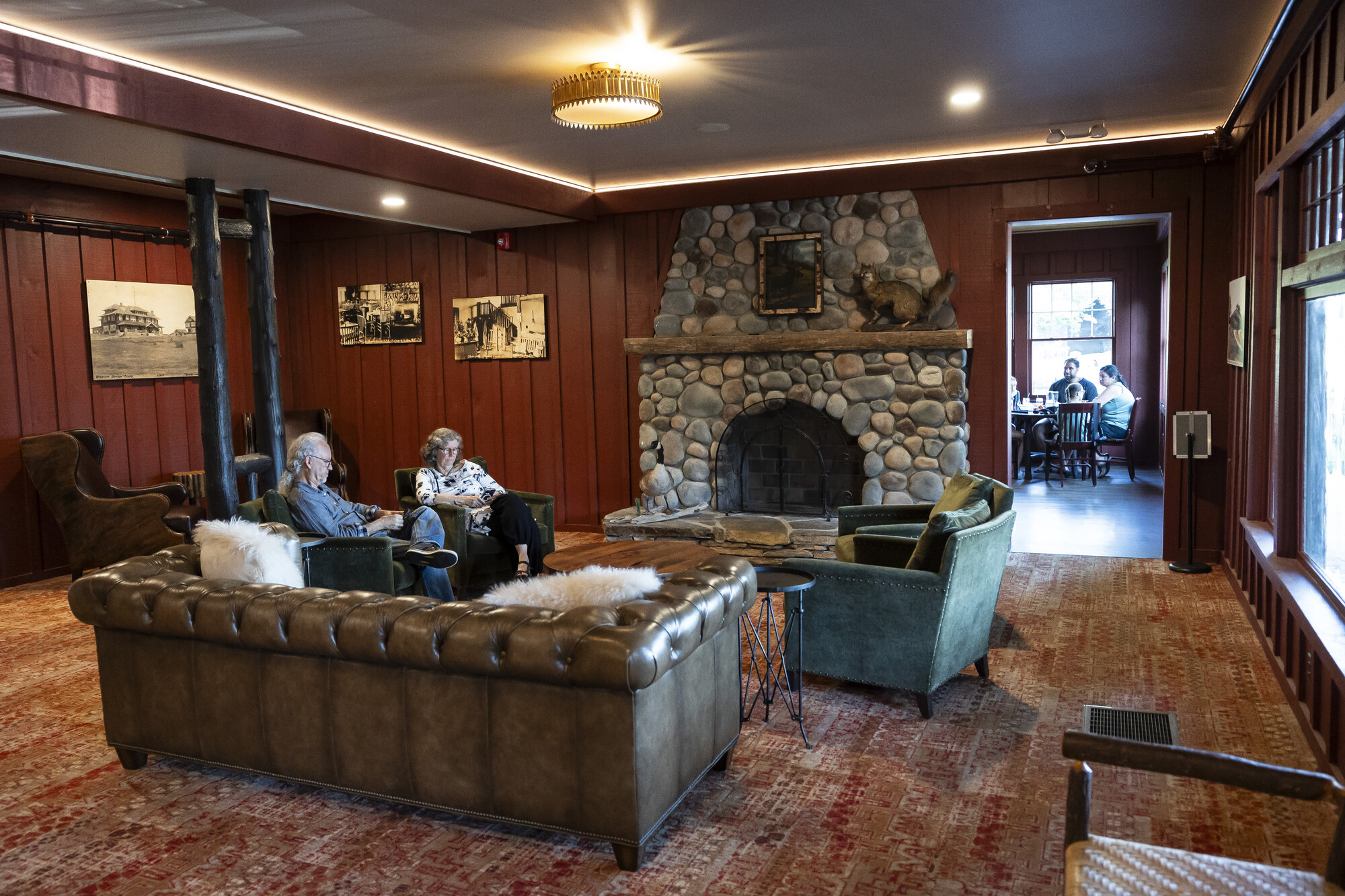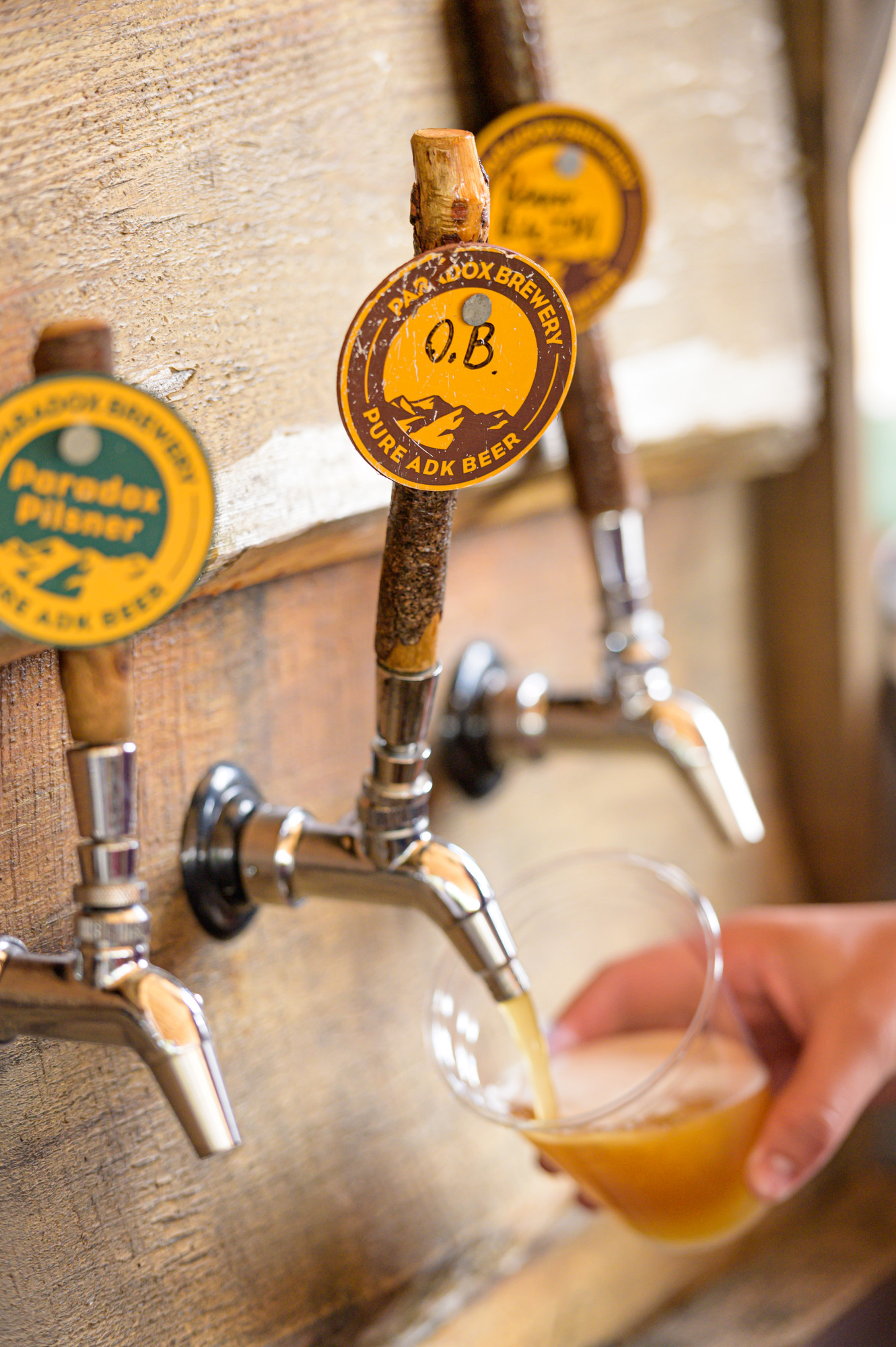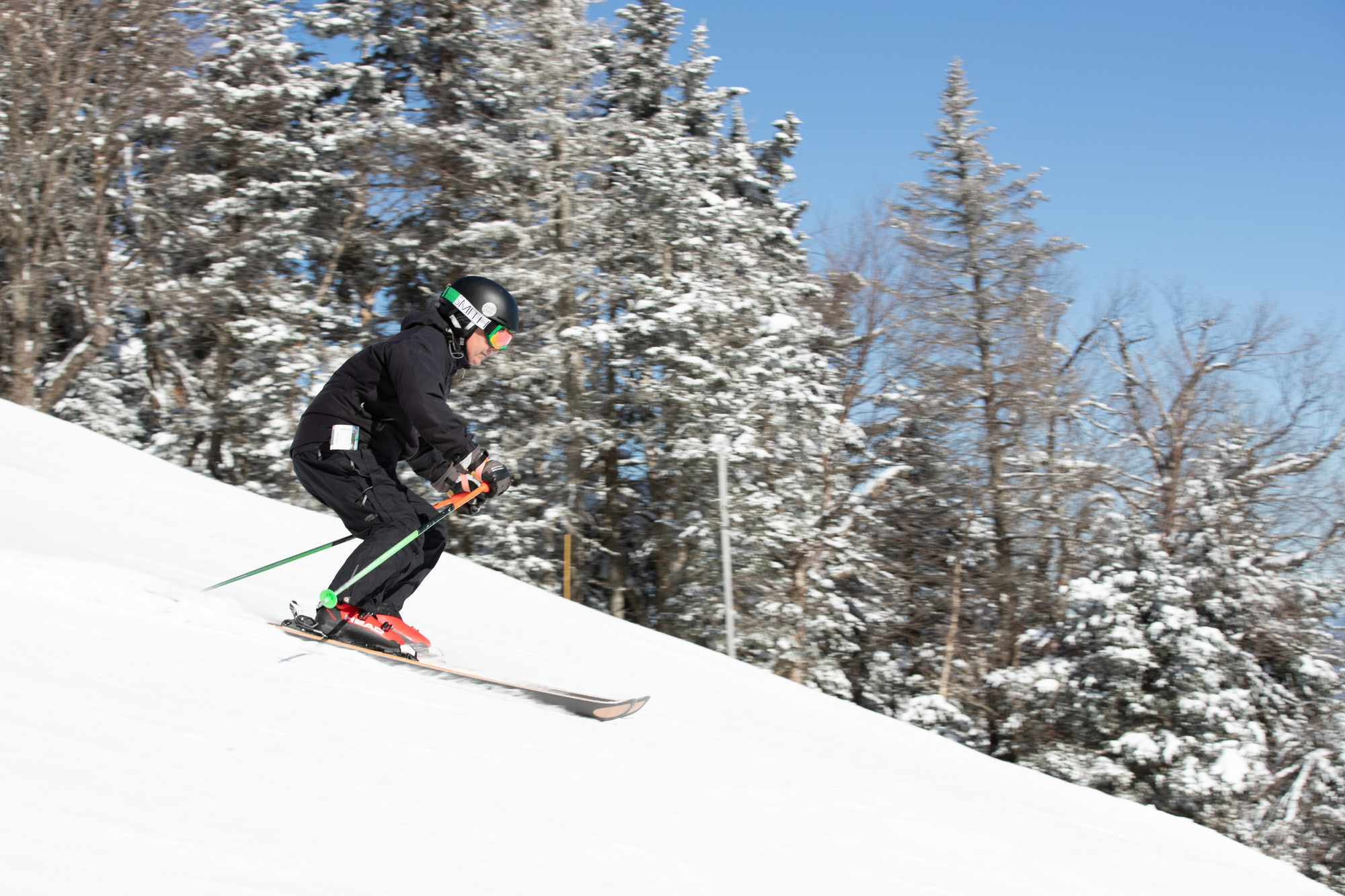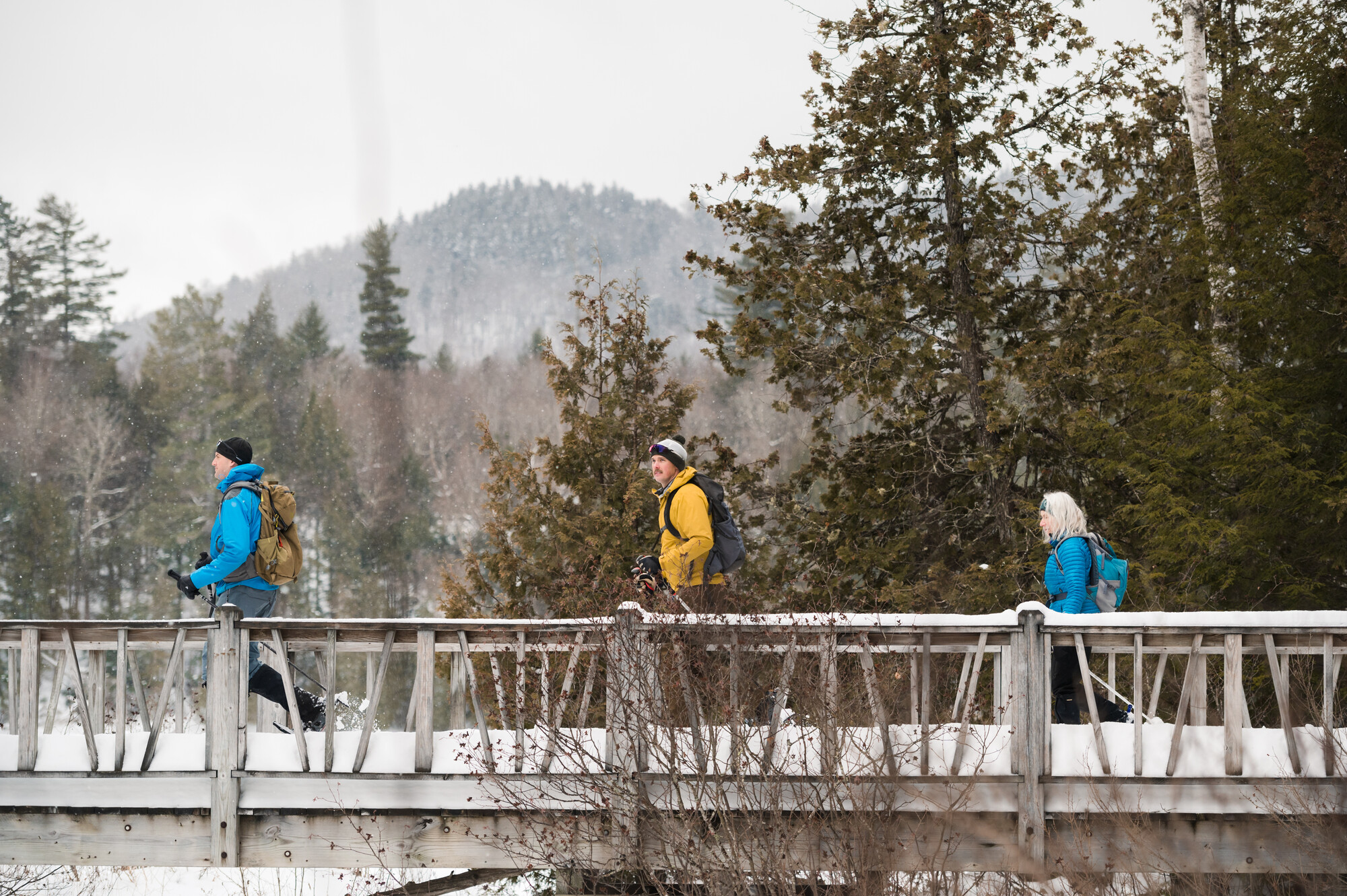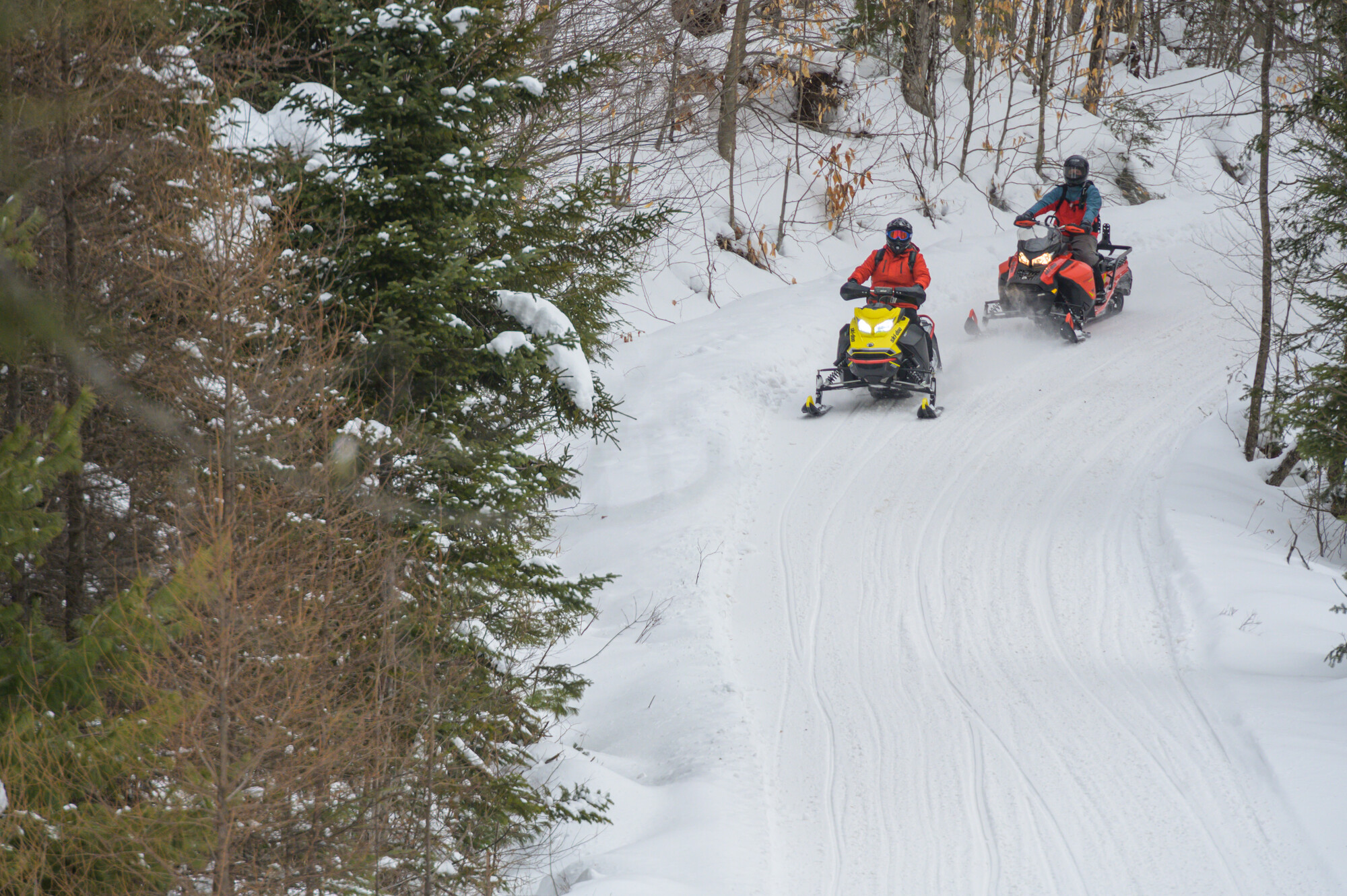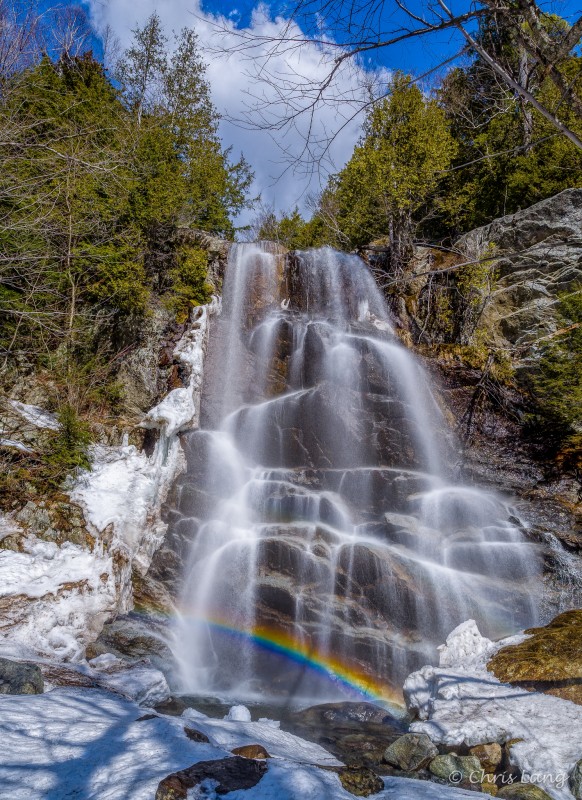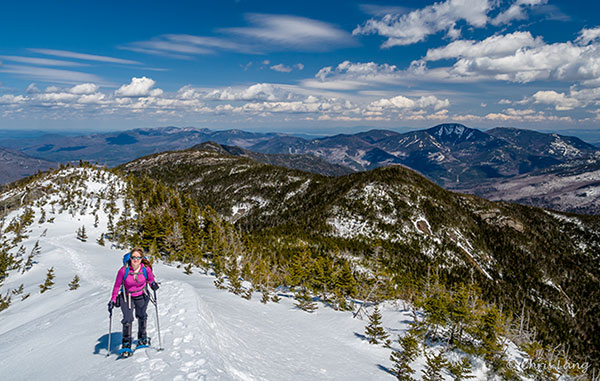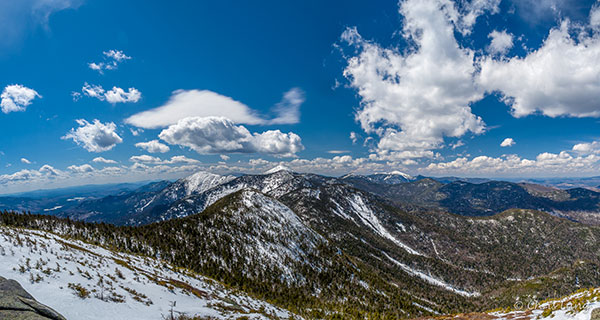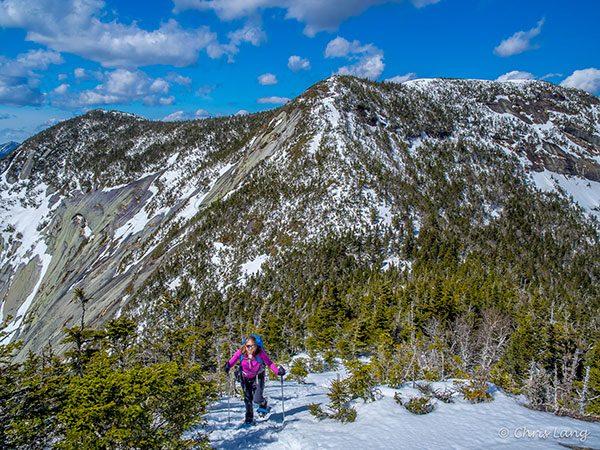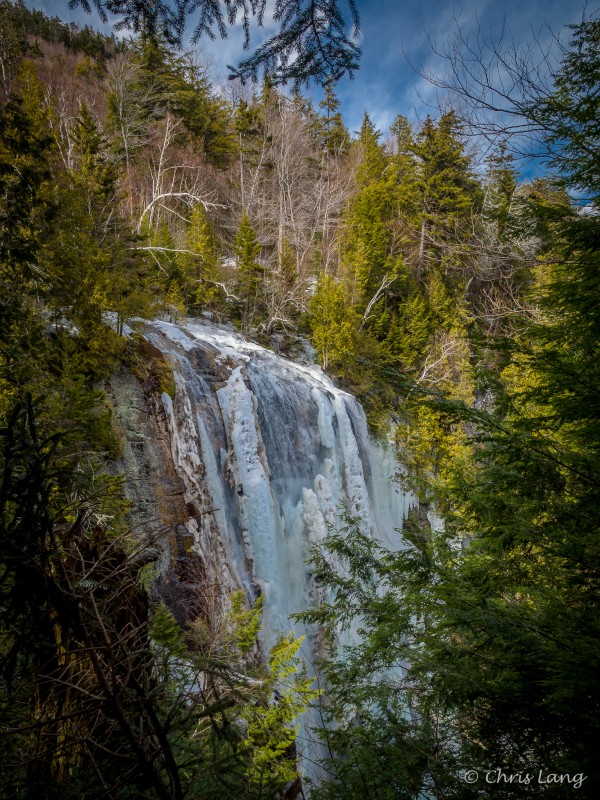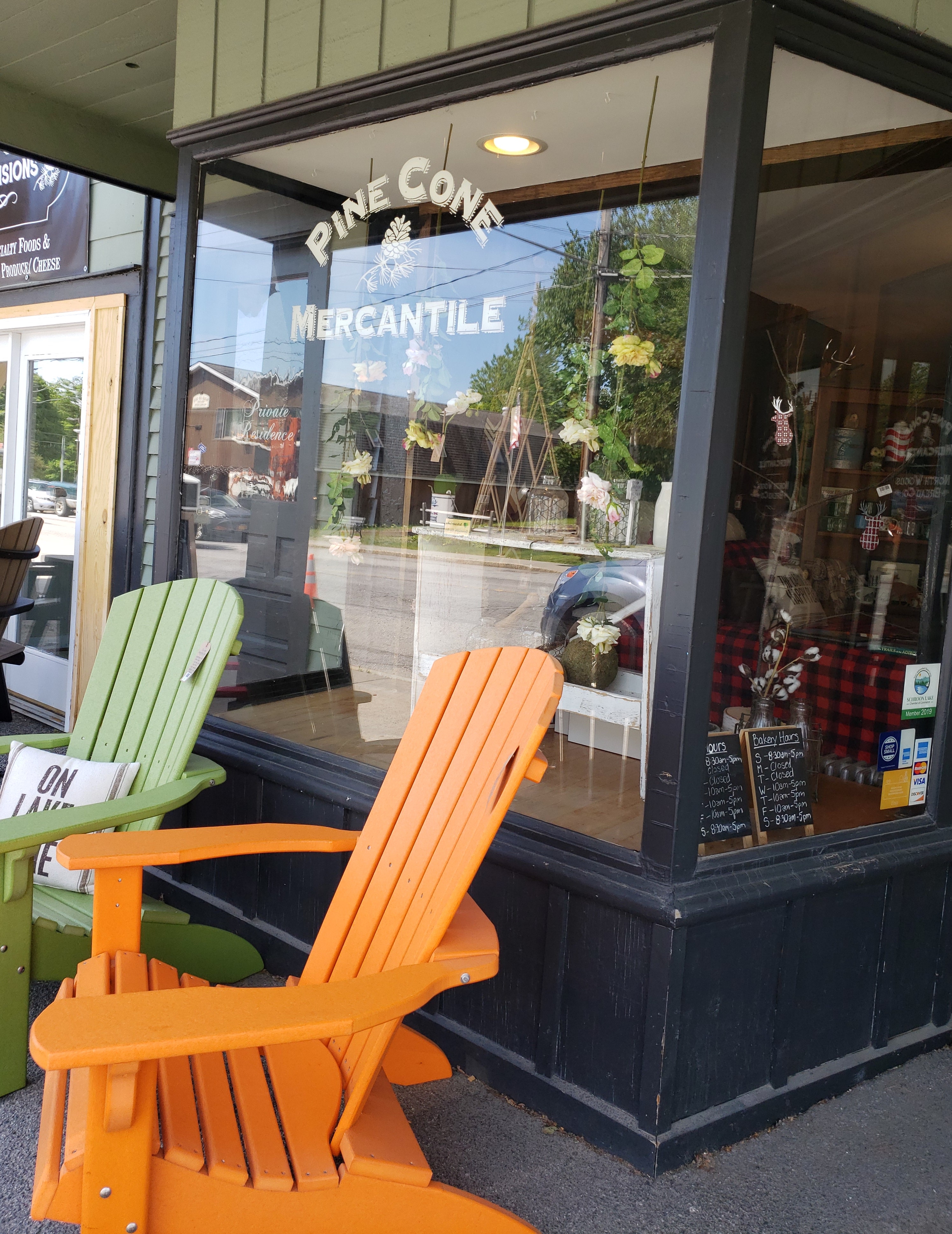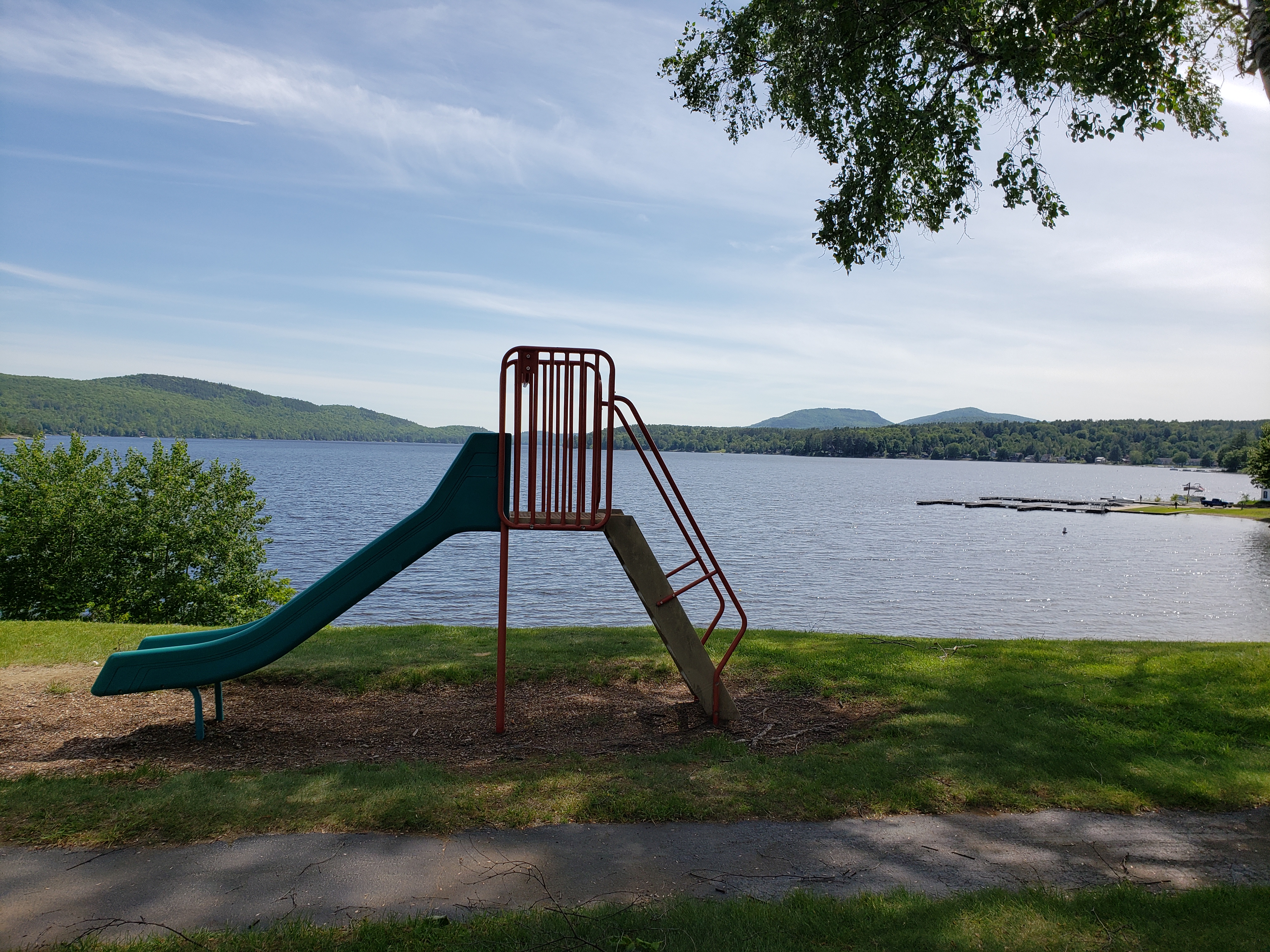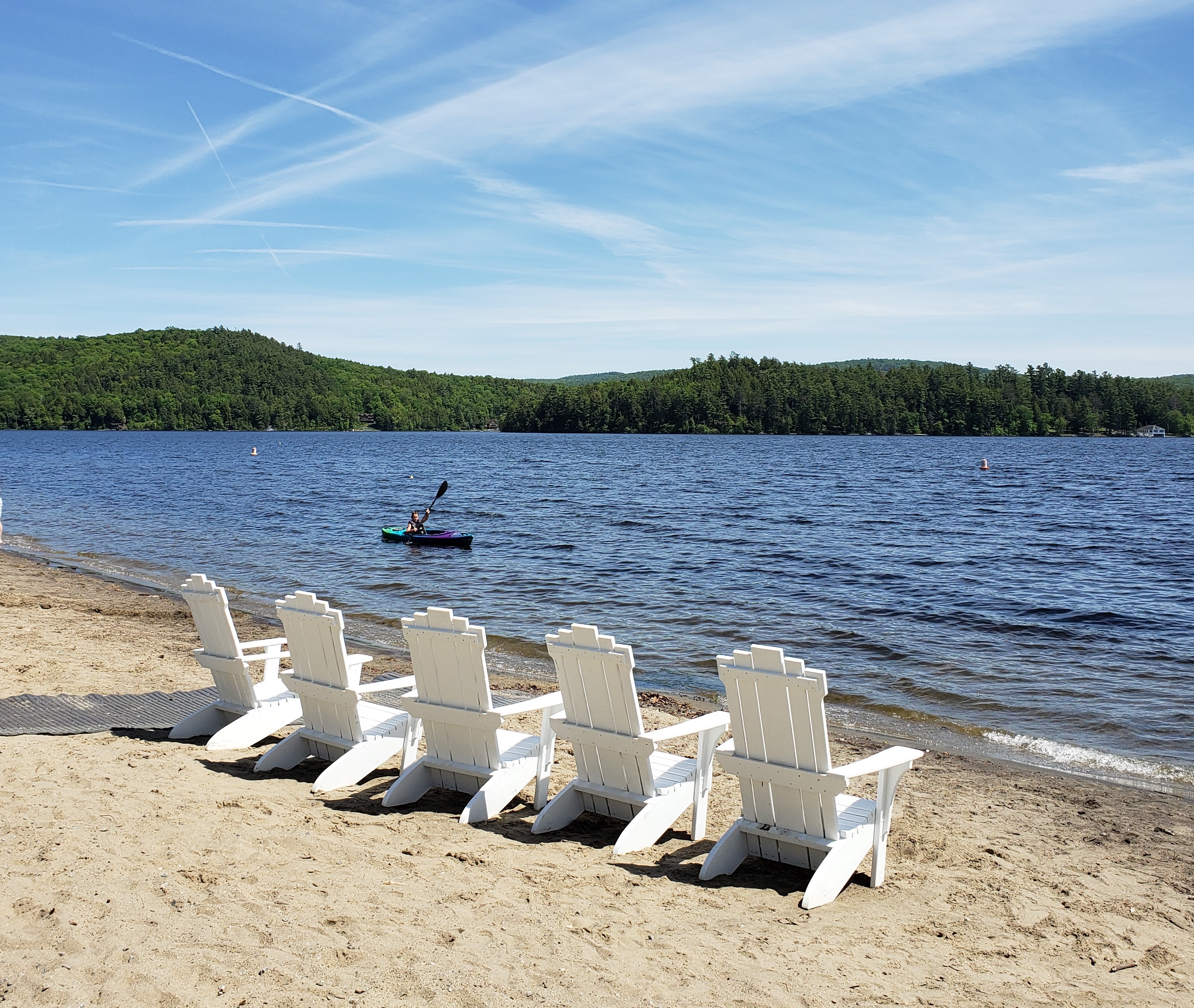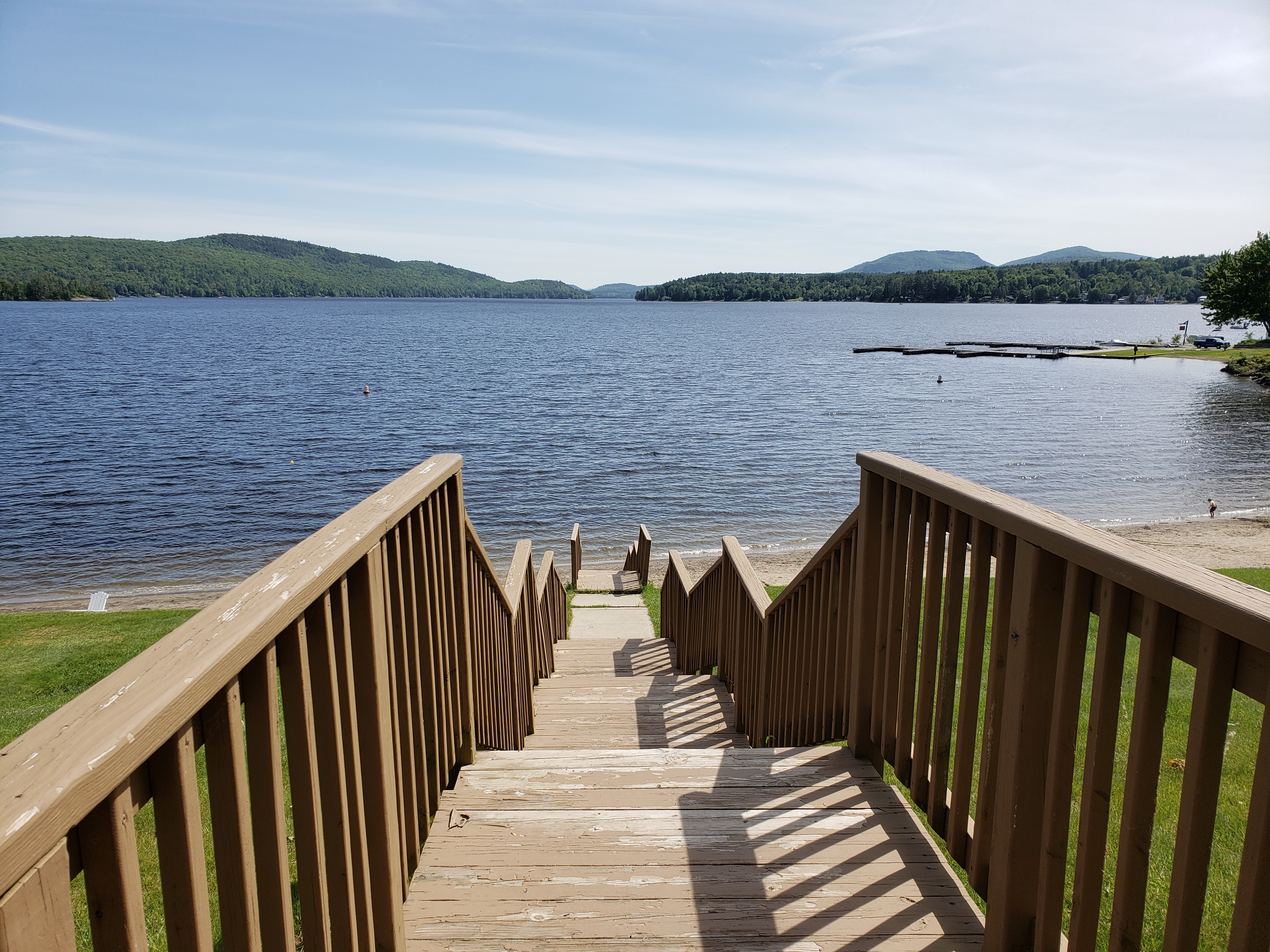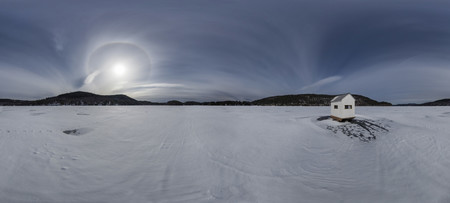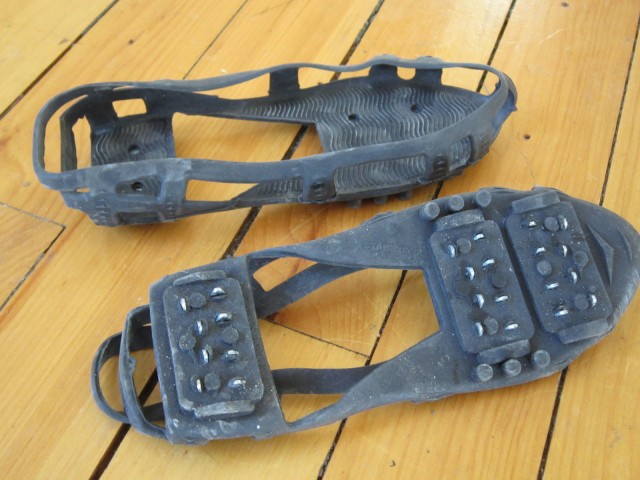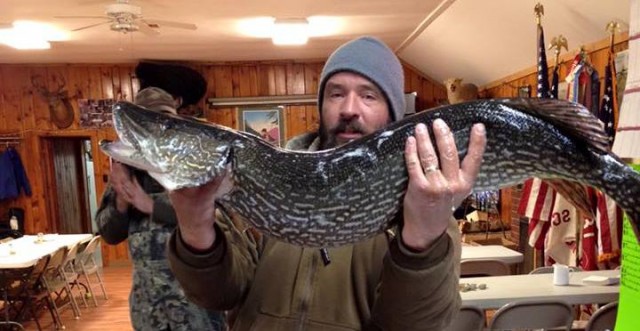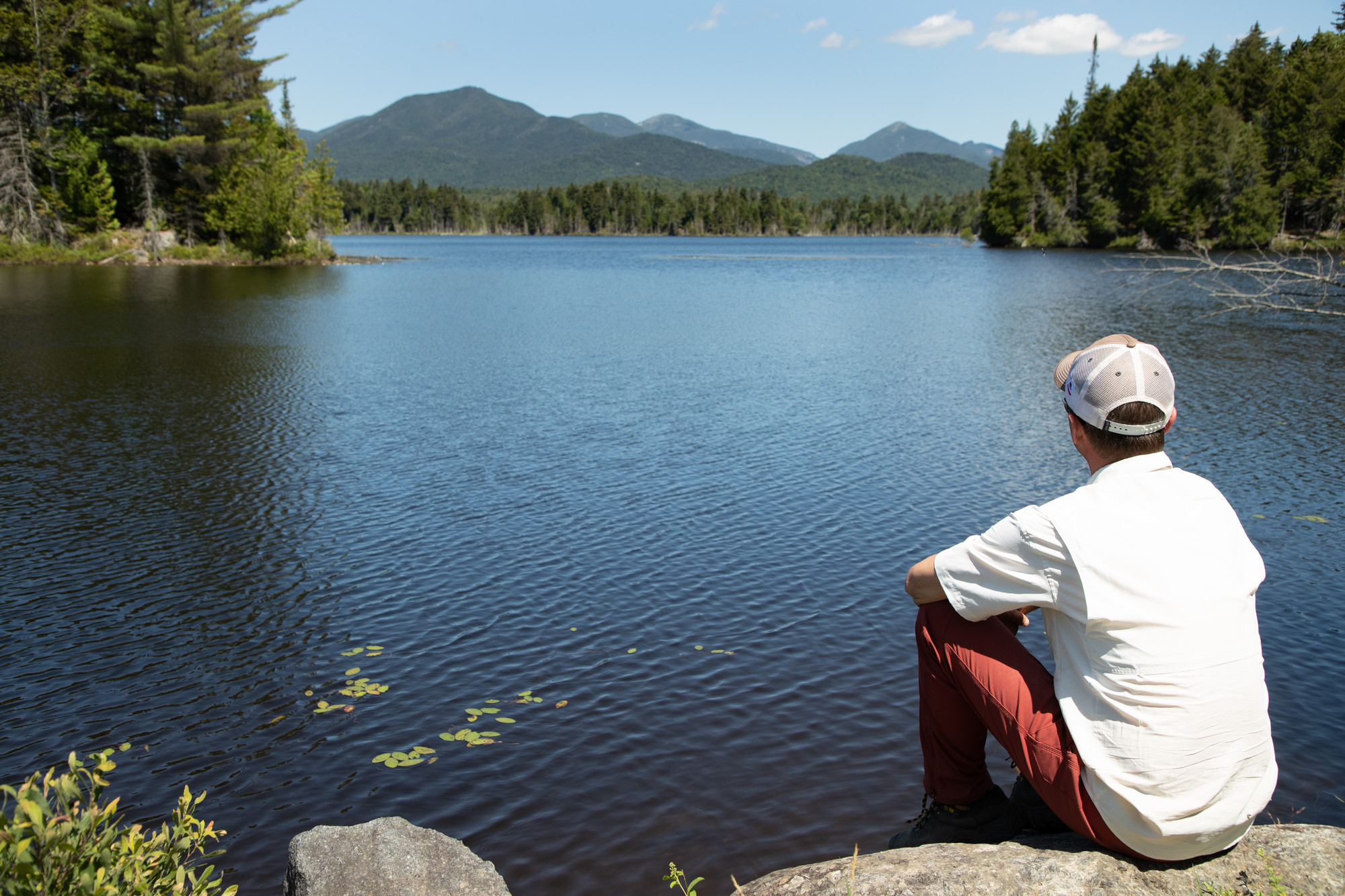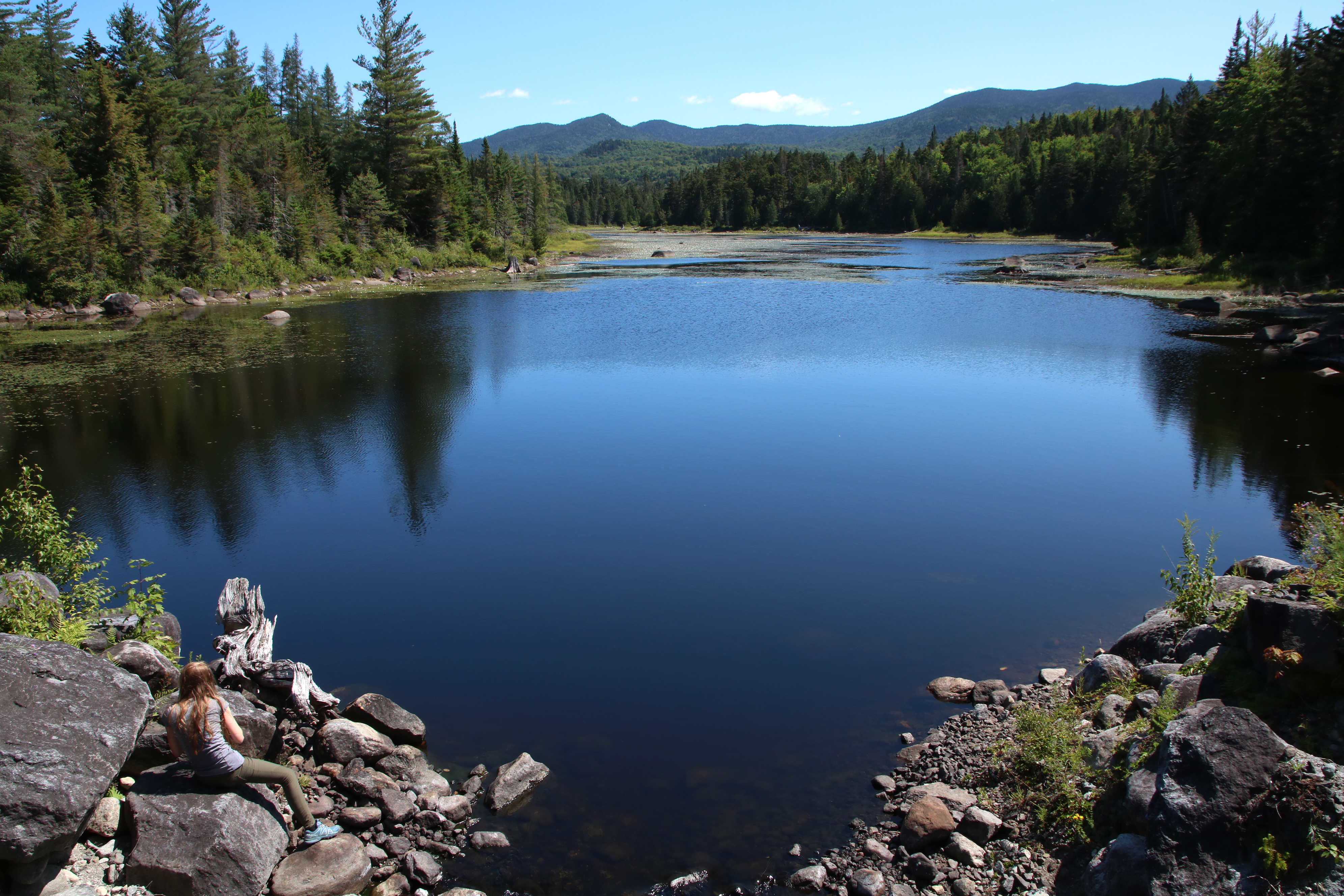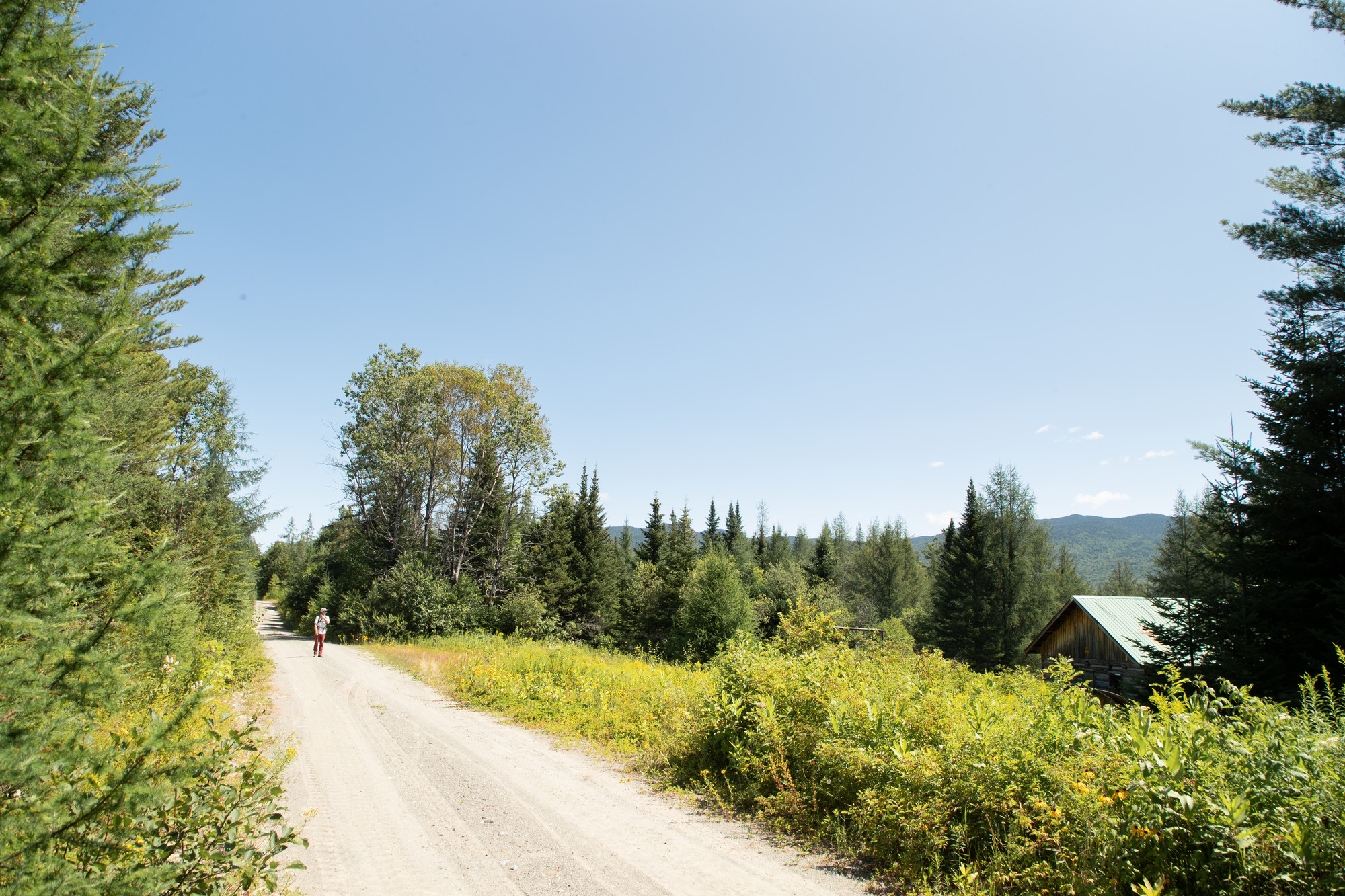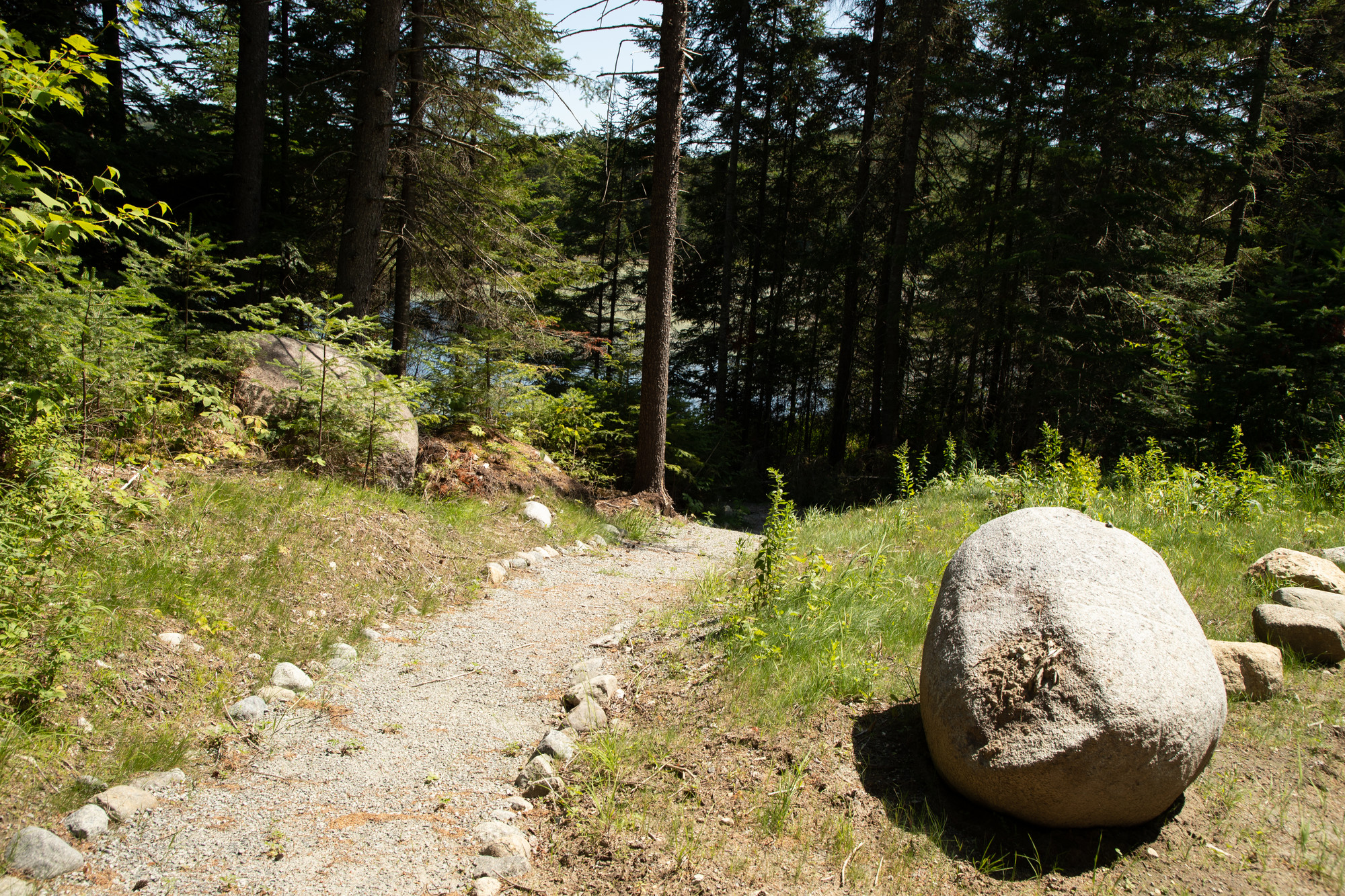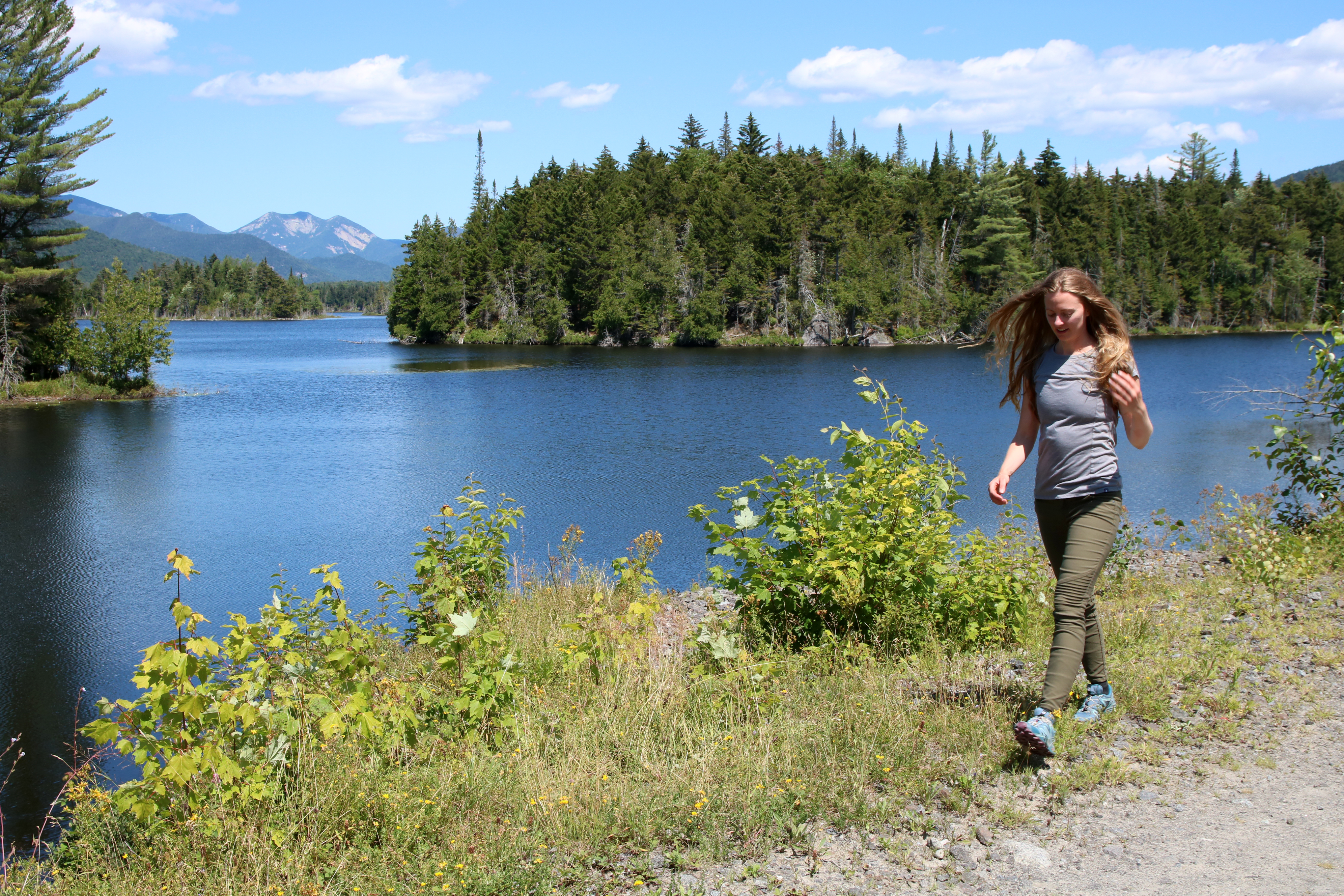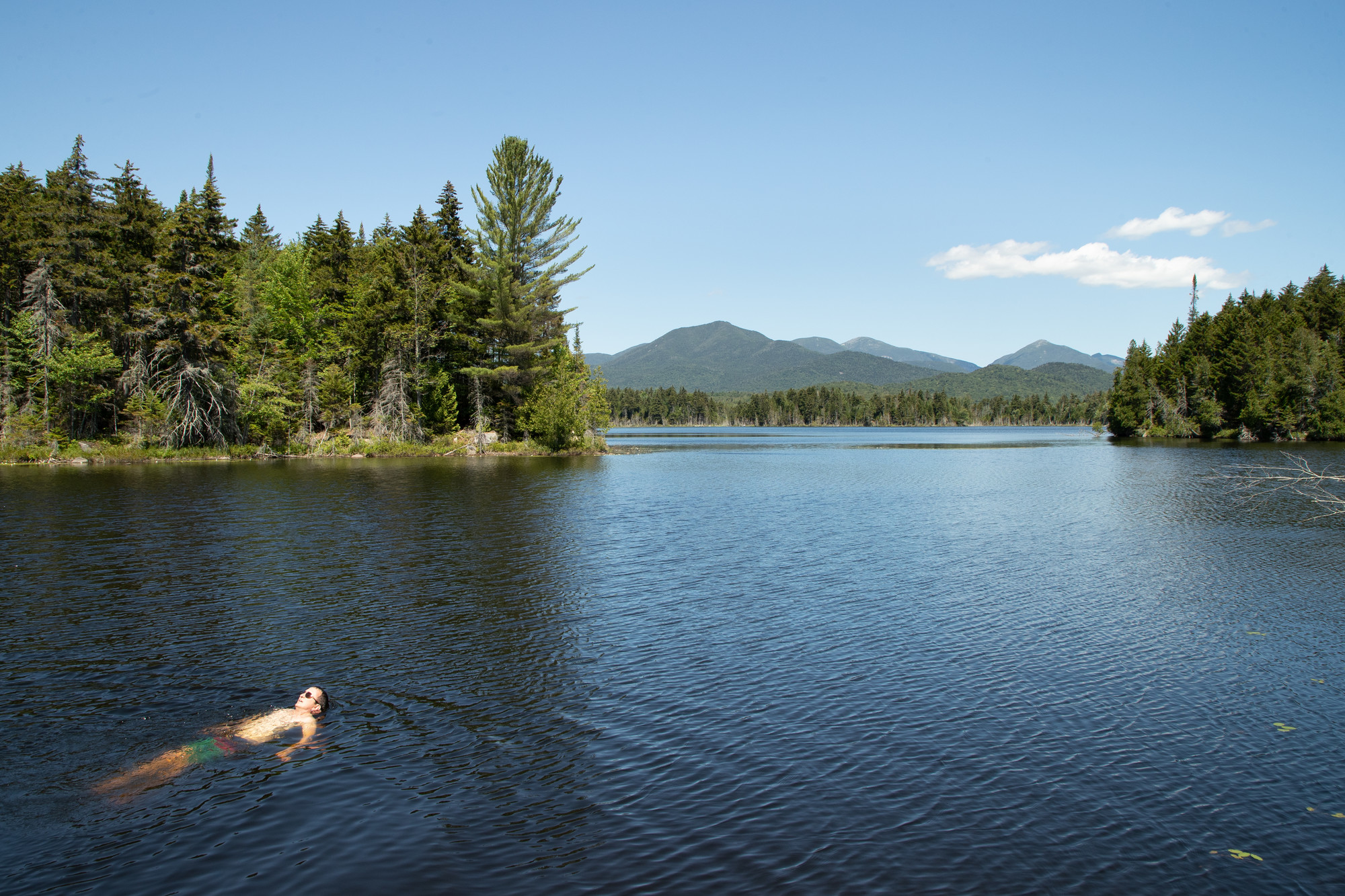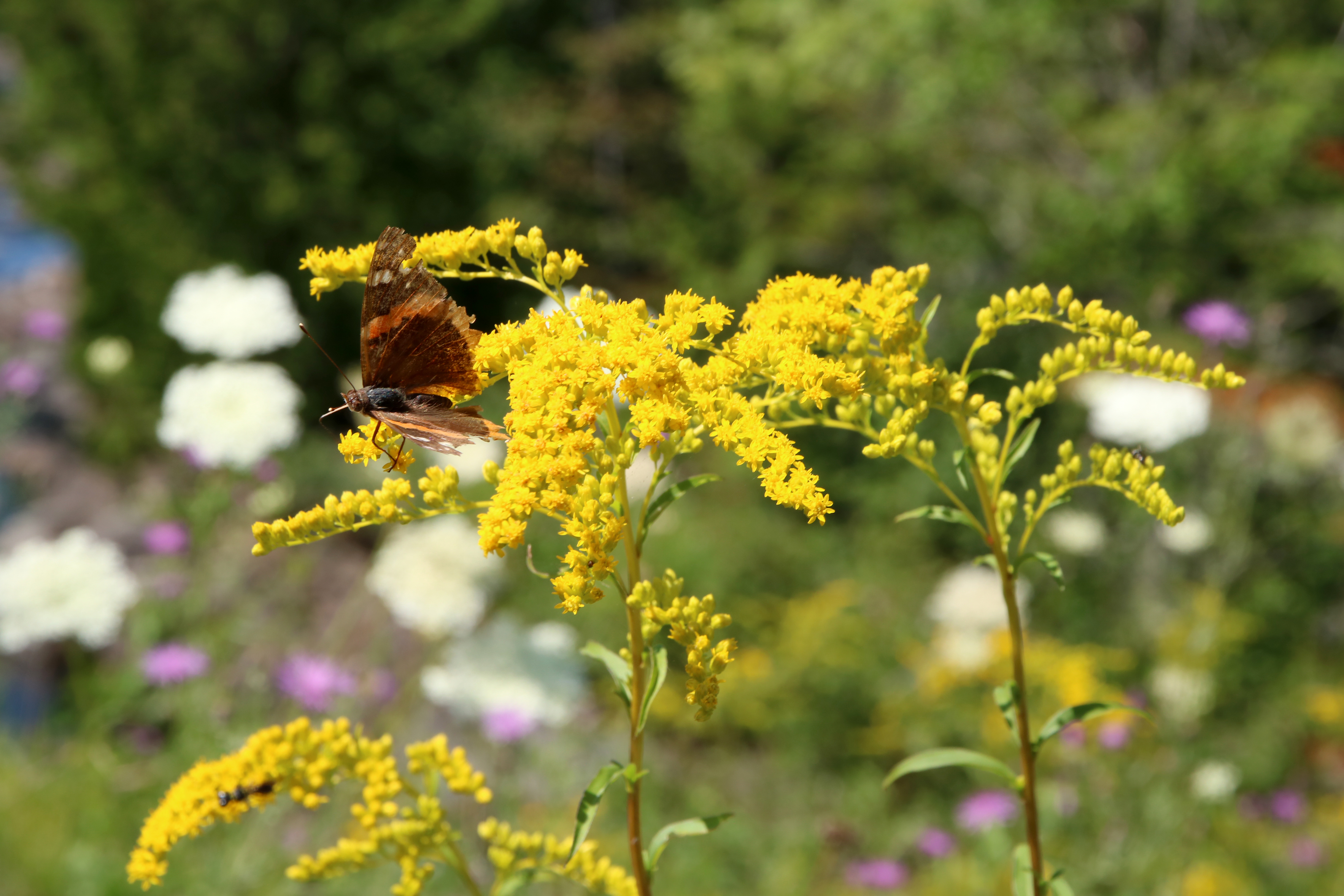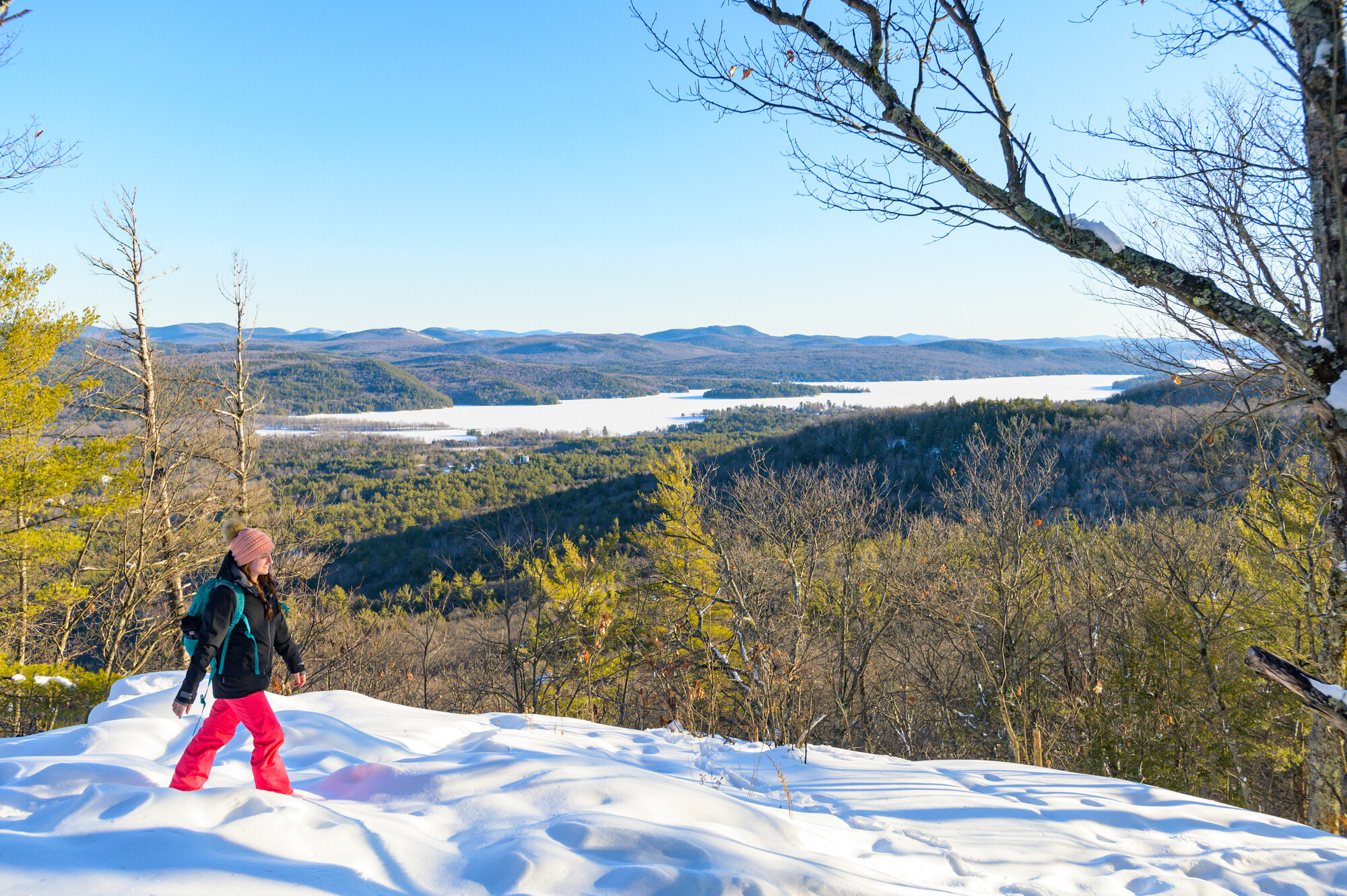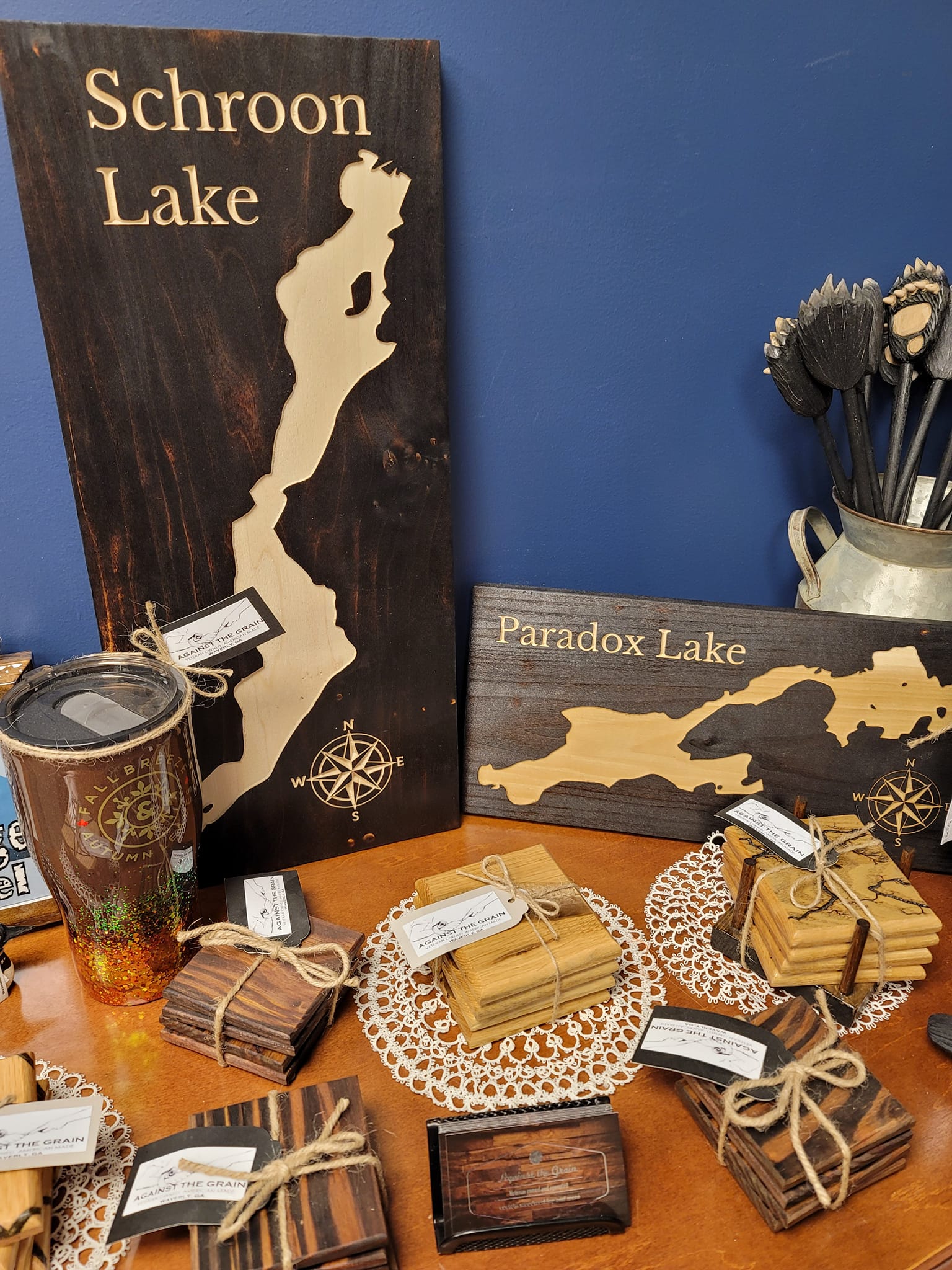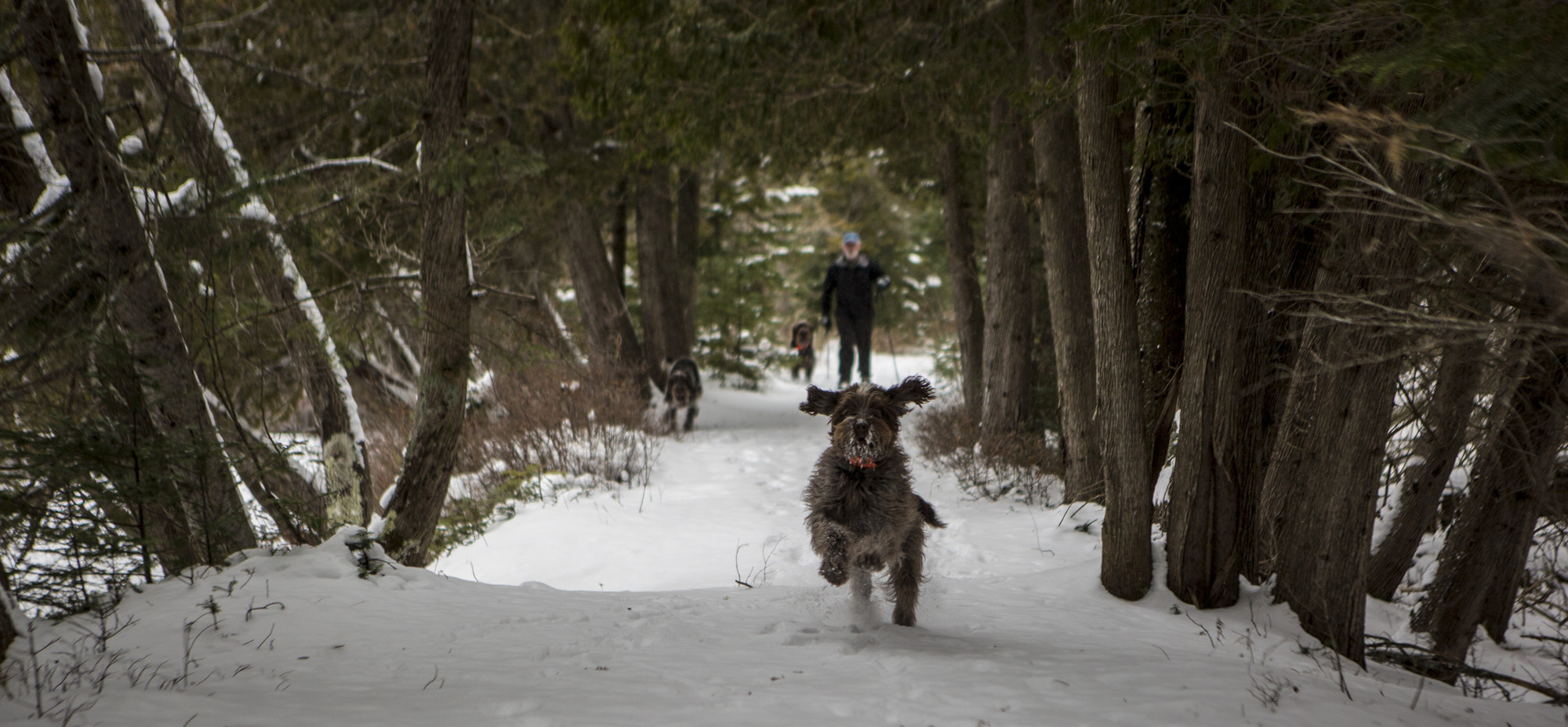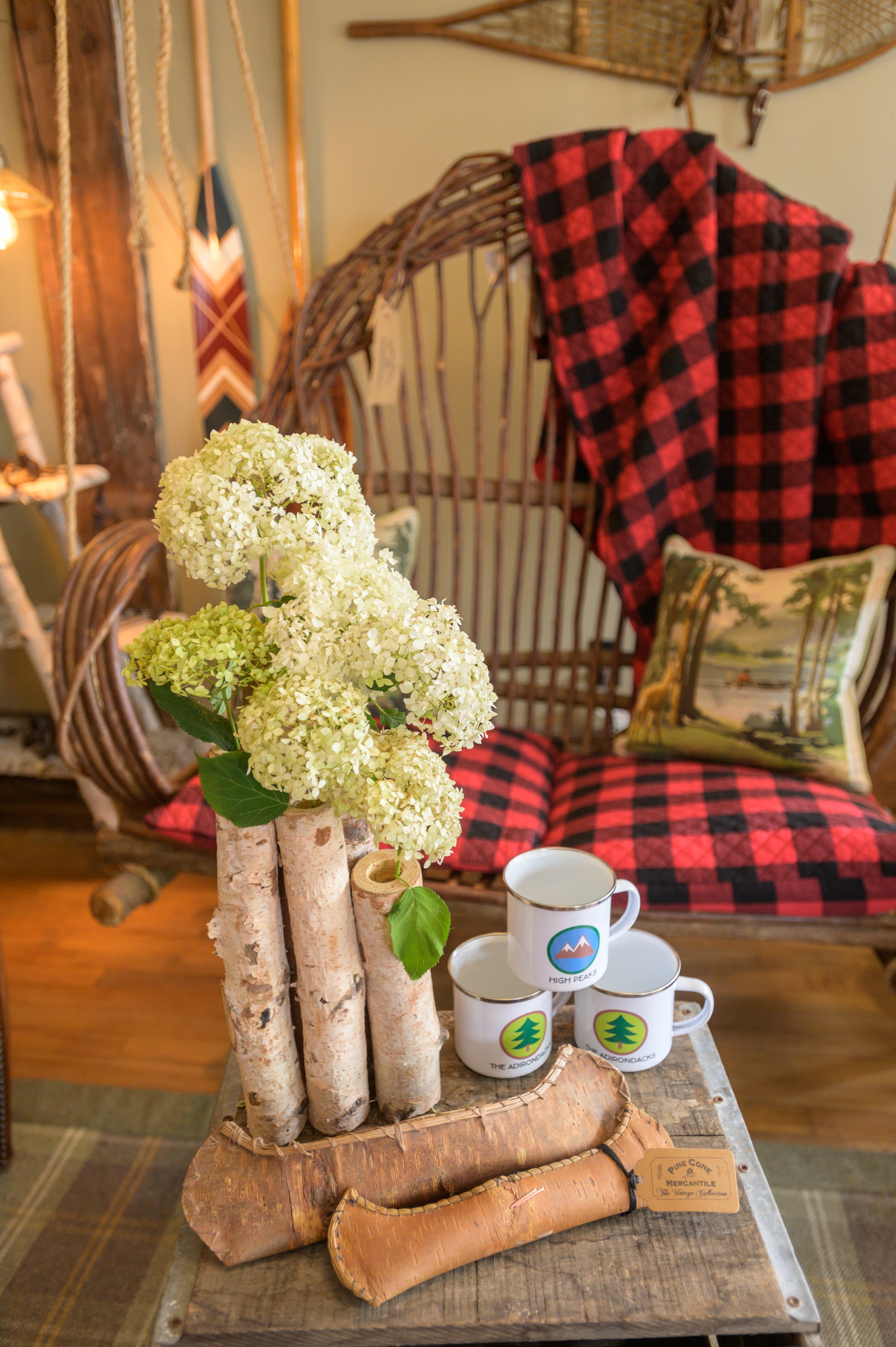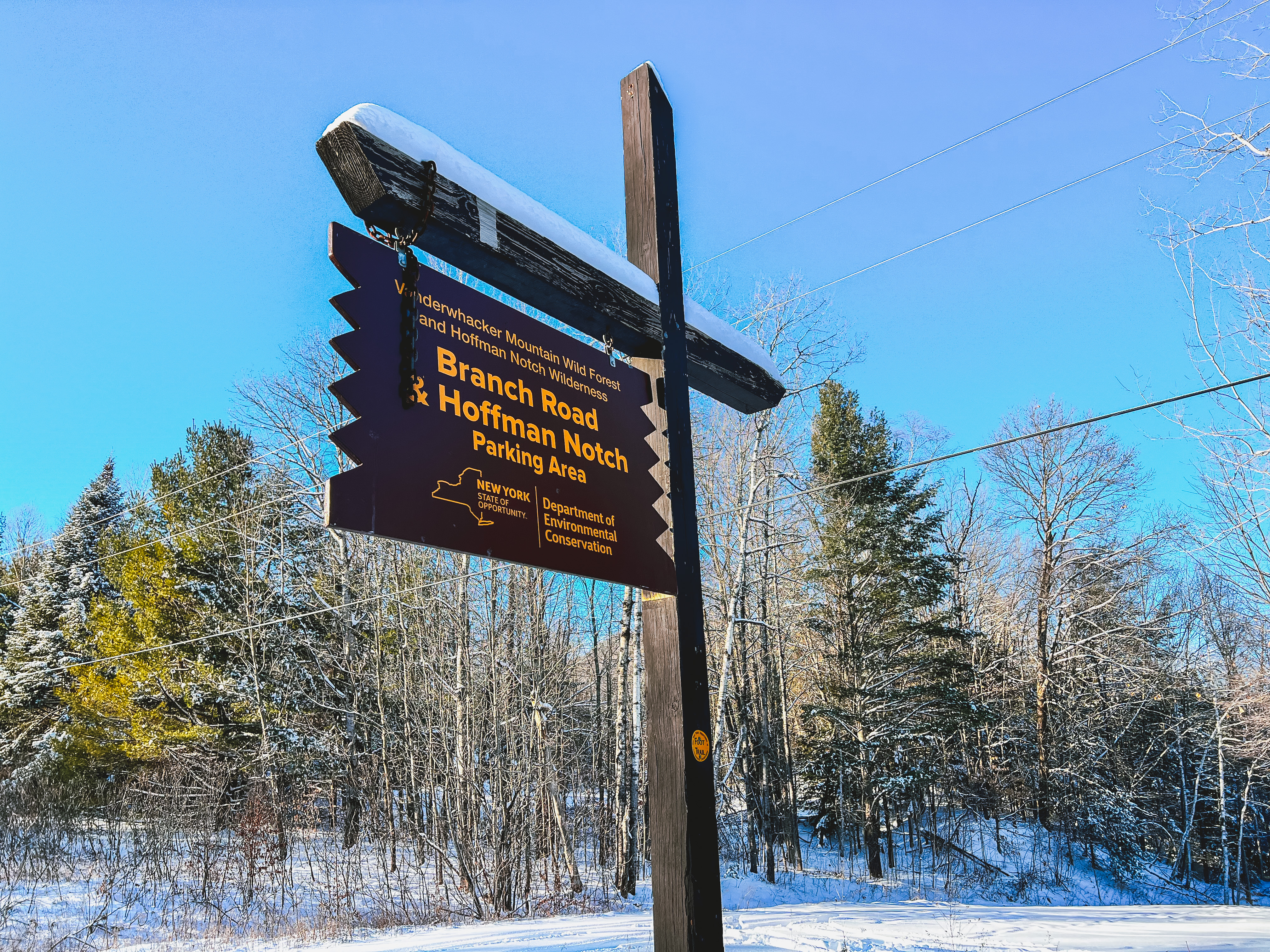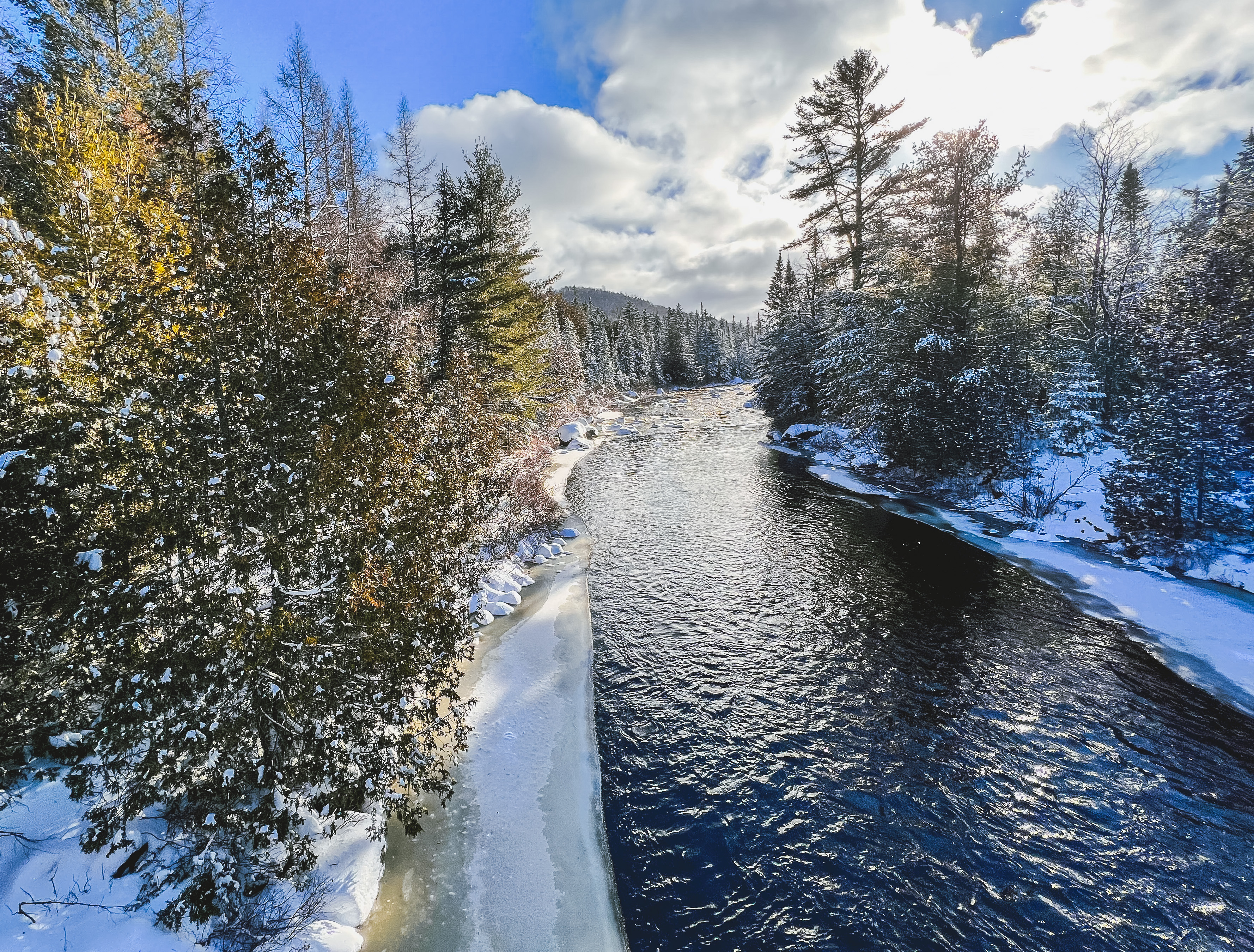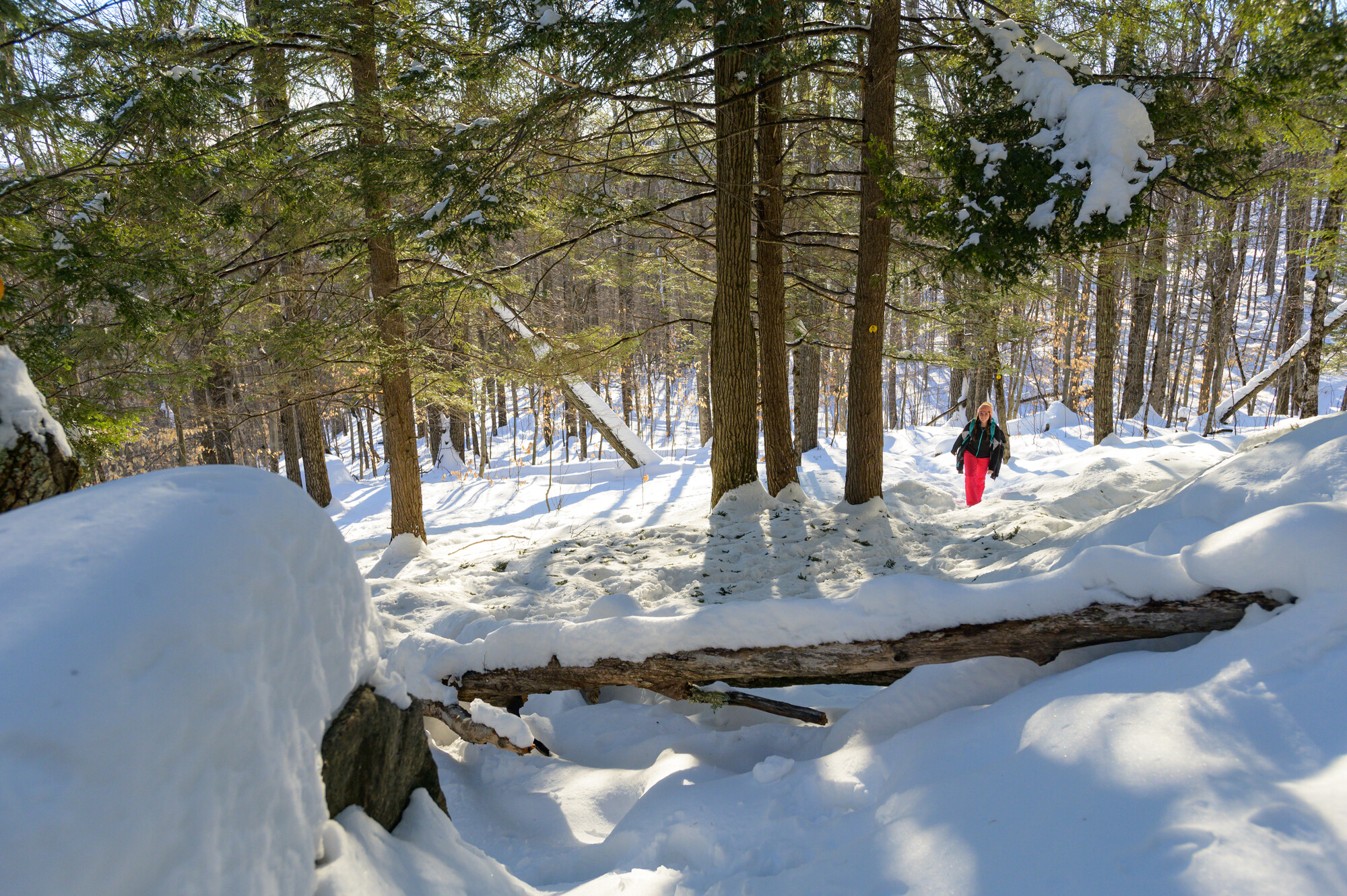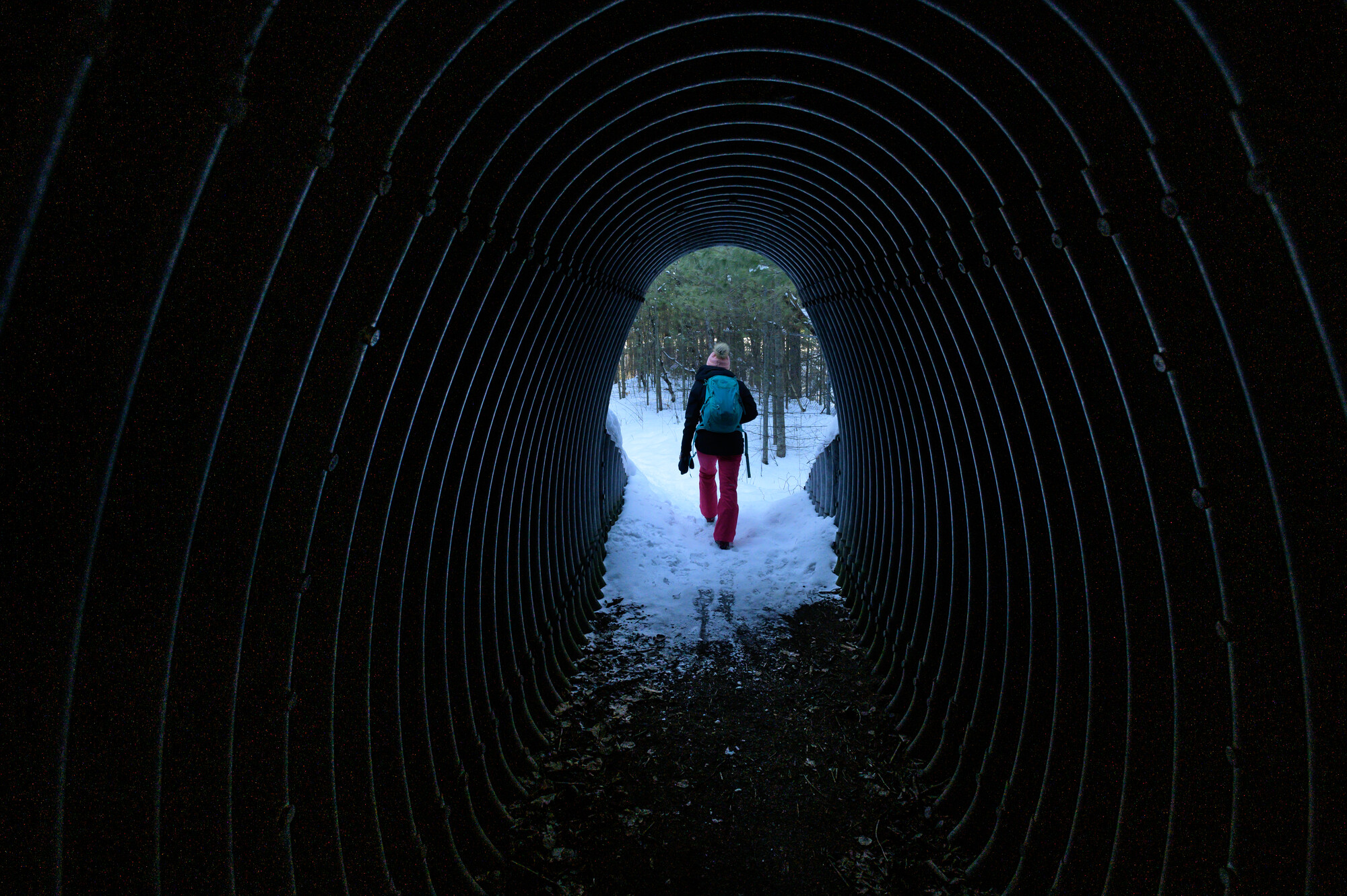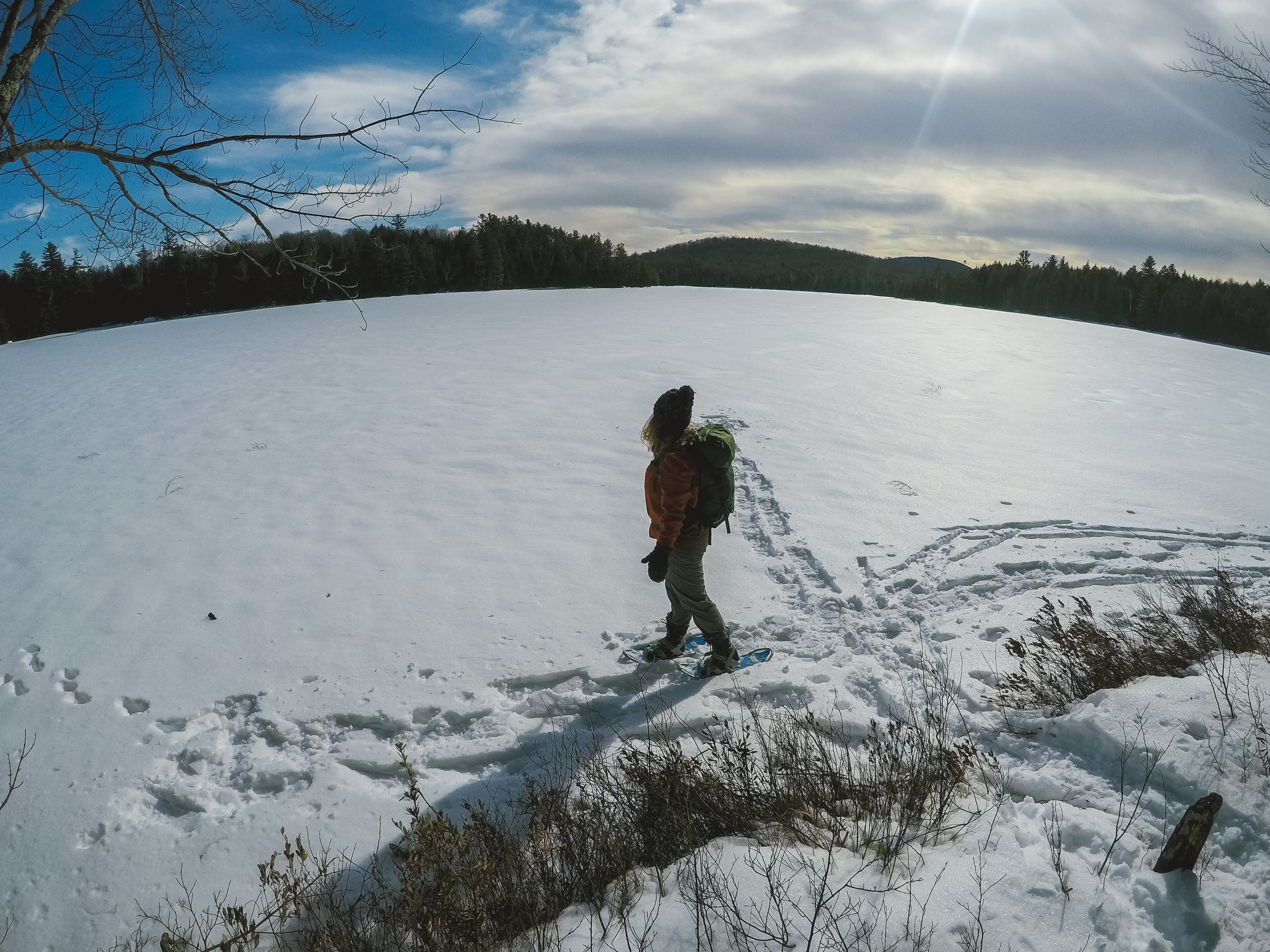I had a thrilling destination in mind for my next snowshoeing adventure. It was the Adirondack Interpretive Center at Newcomb.
All this fresh snow put me in mind of some fresh trails. I had not yet visited this incredible complex, which combines science, conservation, and some awesome scenery.
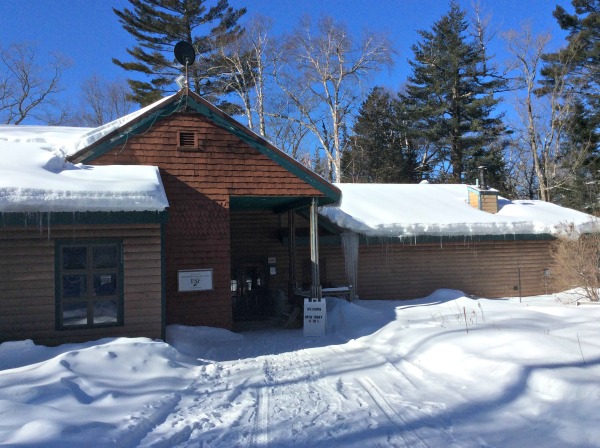
The AIC (as it is known) is a one-stop source for outstanding learning experiences in the central Adirondacks. They also have trails through some of the loveliest wilderness in this special area of the Adirondacks.
It's a museum
This complex is part of the State University of NY's College of Environmental Science and Forestry, America's top-ranked environmental college. So it is no wonder that there are museum sections throughout the complex. Both the giant lobby and the new Forest Room have exhibits which explain the unique geography, flora, and fauna of the Adirondacks.
As seen below, left to right: the Touch Table with interesting artifacts, a model of the Santanoni Barn (now sadly lost to fire), and one of the Forest Room exhibits which explains the eco-system.
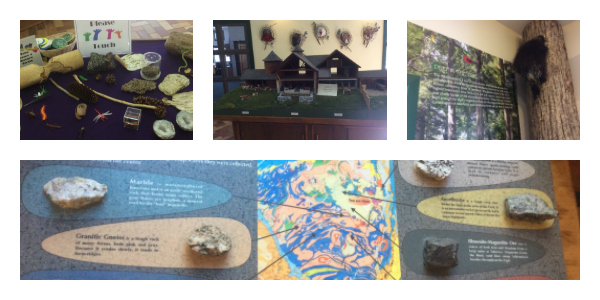
The many rocks which are the base of the Adirondacks are displayed and explained.
This is also a birder's paradise, encompassing boreal forest and wetland habitats in the heart of the mountains. The varied environments include old-growth hemlock, spruce, and northern hardwoods. Thrill to the possibilities among the many lakes, rivers, and streams.
Over one hundred species of birds have been sighted here, including common loon, mallard, black duck, great blue heron, bald eagle, golden eagle, osprey, owls, woodpeckers, and turkeys.
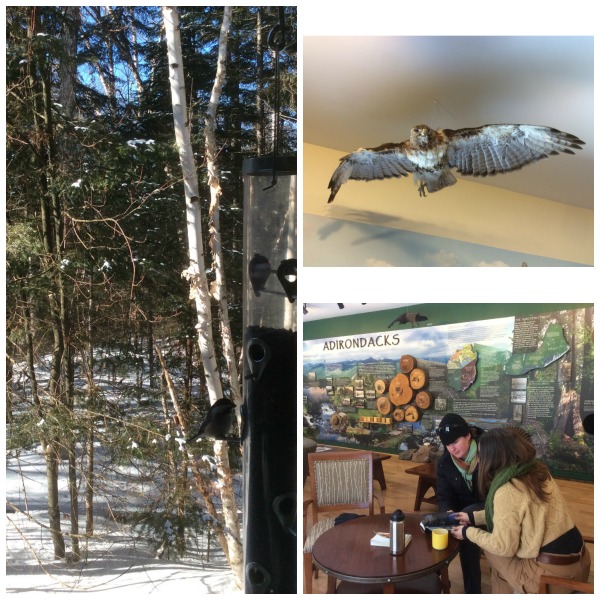
At left, view the birds at the feeders at one of the Forest Room's many large windows. Top right, a red-tailed hawk in mid-flight. Lower right, two birders consult their handy manual.
This entire tract is one of the largest of the Adirondacks. Rich with logging history because of its many water sources, it was then converted to state parkland to preserve the vital and unique eco-systems it contained. Now we can explore it, treading lightly, and see some of the original lands which sustained Native Americans, captivated Hudson School painters and artists, and drew creative people of all kinds.
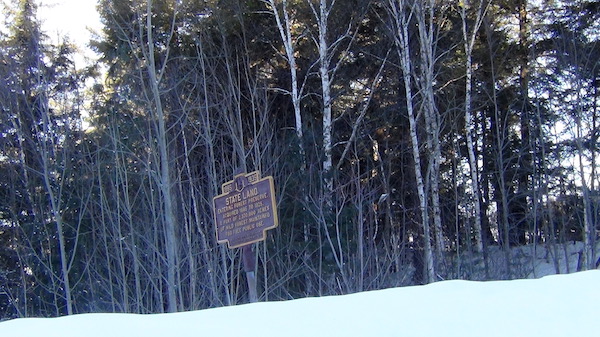
A DEC road sign explains: "STATE LAND. Entering Forest Preserve, acquired 1885 to 1926, a part of 2,370,000 acres of wild forest maintained for free public use."
It's a trail system
The AIC has snowshoe rentals available to guests, so I got buckled in and joined up with Charlotte L. Demers, Wildlife Technician and Facility Manager.
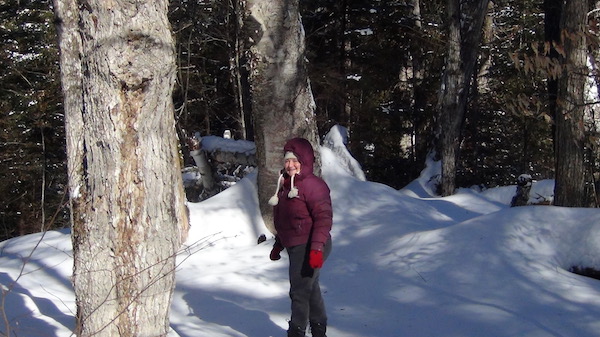
She patrols the grounds often, as part of her responsibilities for collecting information in the databases associated with the AEC's ALTEMP research, which studies long-term ecological monitoring. She is primarily focused on how small mammals contribute to forested ecosystems.
I couldn't ask for a more knowledgeable companion on this trek.
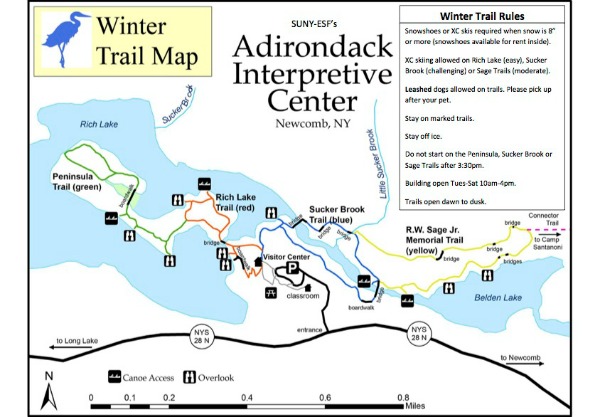
As seen on this AIC trail map, you can choose a trail with just the right mix of forest and water. (Do check for building opening hours, which vary throughout the year.)
We will be following the Sucker Brook Trail, which starts mere steps from the Visitor Center. Charlotte explains it is a mostly wooded route, which will help break the force of the wind. "Rich Lake is very scenic," she explained, "but most of the time the wind would be blowing right in our face. That's a trail best explored on a quiet day."
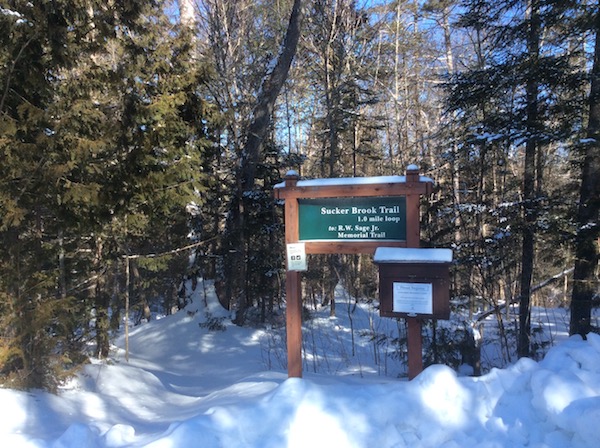
The Sucker Brook Trail (sign the register!) is varied despite its short distance. We start out in lovely forest, and soon encounter one of the many bridges and streams this trail offers.
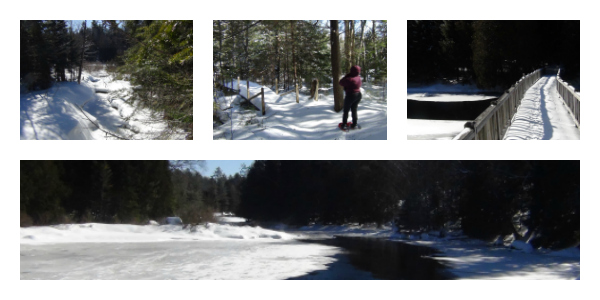
Top, left to right: a stream revealed by snow collapsed by the current, Charlotte waits for me at the entrance to a simple bridge, a larger bridge spans a wider part.
Bottom: the view from the middle of the bridge.
The bright sunshine and blue skies are counterbalanced by a strong wind and low temps, but here in the forest, bundled warmly, we don't even notice; we just get all the sky and sun.
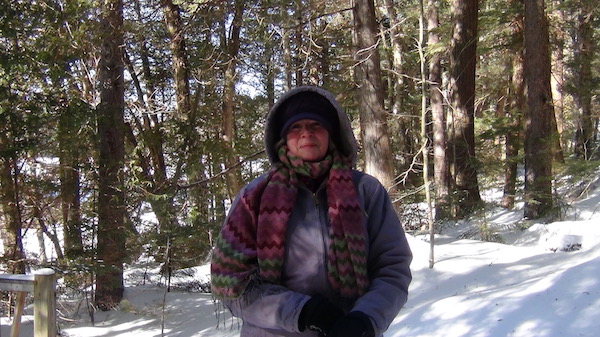
Here, your faithful blogger demonstrates staying-warm strategies. I have two layers under the parka, so I can unzip it when our activity warms me up. I have a brimmed hat under the parka hood for the same purpose, and this also lets me avoid sunglasses to aid in my picture taking. Likewise, I wear gloves so I can work my camera, but if we were to be out for longer periods, I would also bring mittens to wear on top.
As a friend of mine likes to say, "There's no bad weather, there's only inappropriate clothing."
Charlotte is an expert at spotting wildlife tracks and knowing what they mean about the animal and its behavior. She shows me the wild dance party moves made by a squirrel at the base of a tree, the gnawing signs of beaver activity, and the unique shapes which distinguishes mink, long-tailed weasel, American marten, and otter.
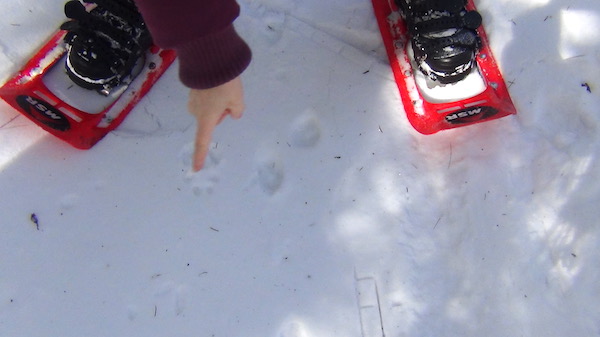
As seen here, Charlotte draws a template with her finger to show why these are coyote tracks; which can be mistaken for fox or bobcat.
The snow is delightfully deep, and the low temps make it incredibly crunchy. We have to stop to have a conversation, because it sounds like we are walking on cornflakes. Sound tells us a lot about the snow we are walking on.
In this case, the crust on top of the snow retains tracks far better than drier, fluffier, snow would.
It's an experience
I was only able to to hike one trail and part of a second before I had to move on. But I had such an exhilarating time I kept all the other trails in mind for the future.
There's a three-mile hike to the top of Goodnow Mountain, a mile-long forested peninsula to explore in the middle of Rich Lake, and plenty of scenic overlooks, boardwalks, and bridges to help in areas of tricky terrain.
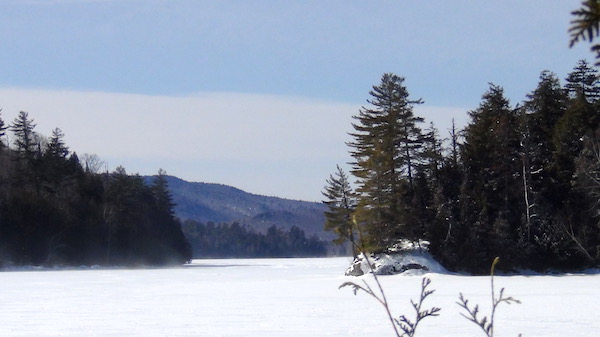
The R. W. Sage, Jr. trail leads to an overlook of Belden Lake. In the distance, the range which includes Goodnow Mountain and its restored fire tower. It is only two miles to the top of Goodnow Mountain.
The trails can also join the trail which leads to the famous Camp Santanoni, which is only accessible by skiing, or snowshoeing in the winter. In summer, you can hire a wagon trip to get to Santanoni and it is open for bicycling or hiking.
This gem of Adirondack Great Camp architecture is now the Camp Santanoni Preserve, a designated Historic Area that is thirty-two acres in size. Access is along their old carriage road (Newcomb Lake Road) which brings visitors to the remaining buildings of a highly sophisticated, and architecturally distinguished, Great Camp. It is one of the relatively few which are both still in existence, and accessible to the public.
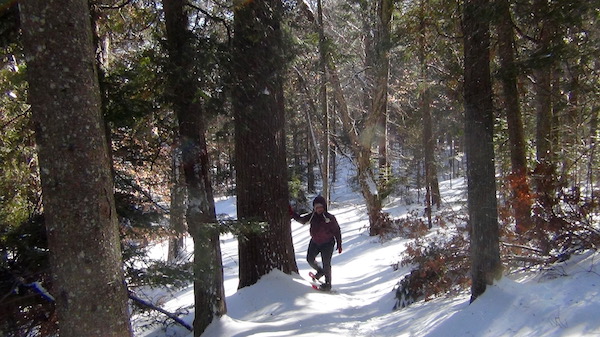
Here, Charlotte shows off one of her favorite trees, a white pine which is one of their biggest.
Future expansion plans will include smartphone access to an audio "guided tour" much like the one I got in person. "We started with the basic guideposts, but these get obscured in the winter." Charlotte showed me an informational signpost so encrusted with snow we could not clear it to see the words beneath. "And things change. This is a living environment. We tell people to look at a tree and then the beavers cut it down. So we need to be more responsive and flexible."
From what I can see, they are wonderful at it. Be sure to drop a donation in the box as you enter the complex! It supports the many programs and benefits of the AIC.
Find cozy lodging. Tame that appetite with our dining choices. Choose from our range of outdoor activities.
